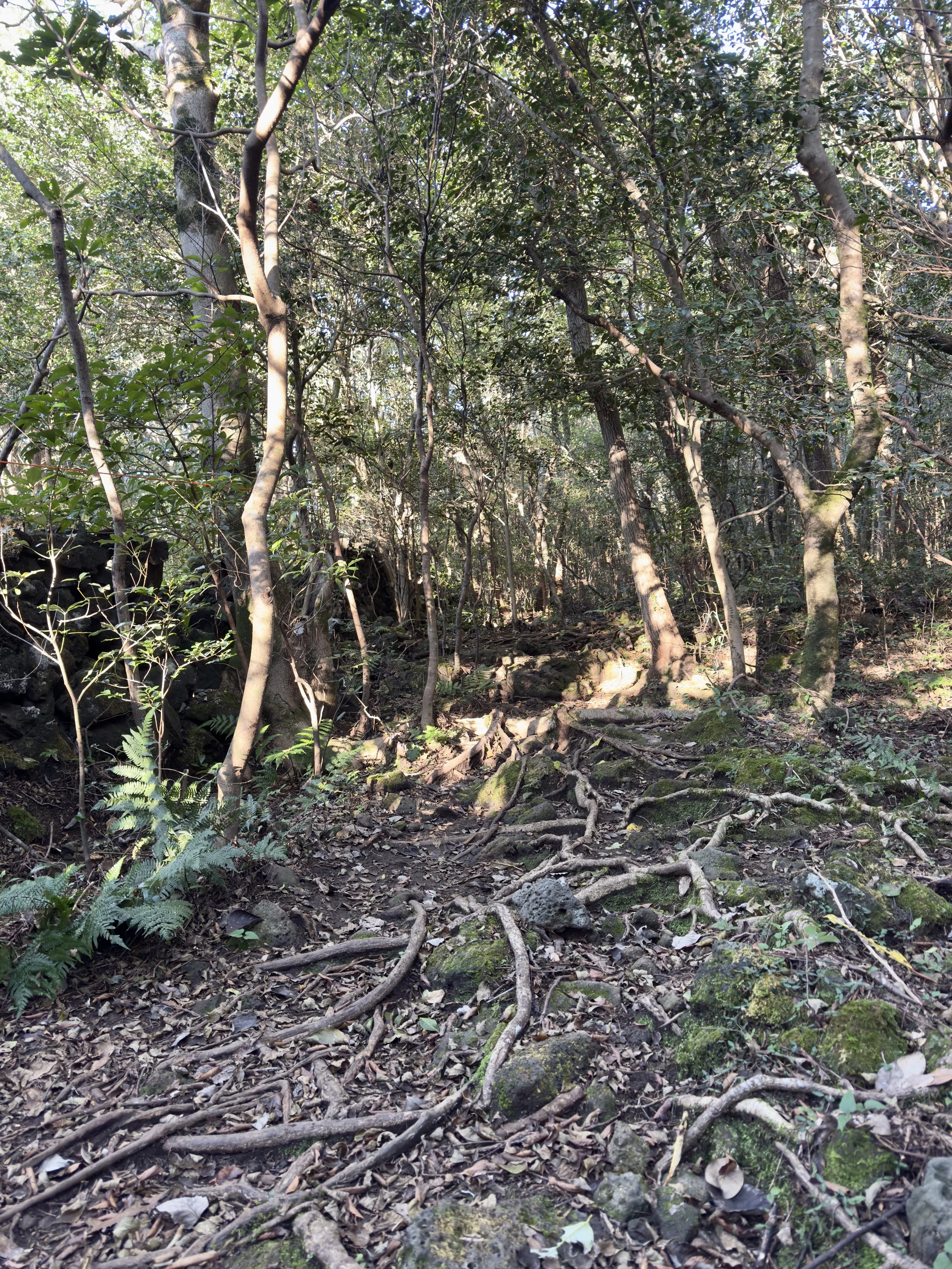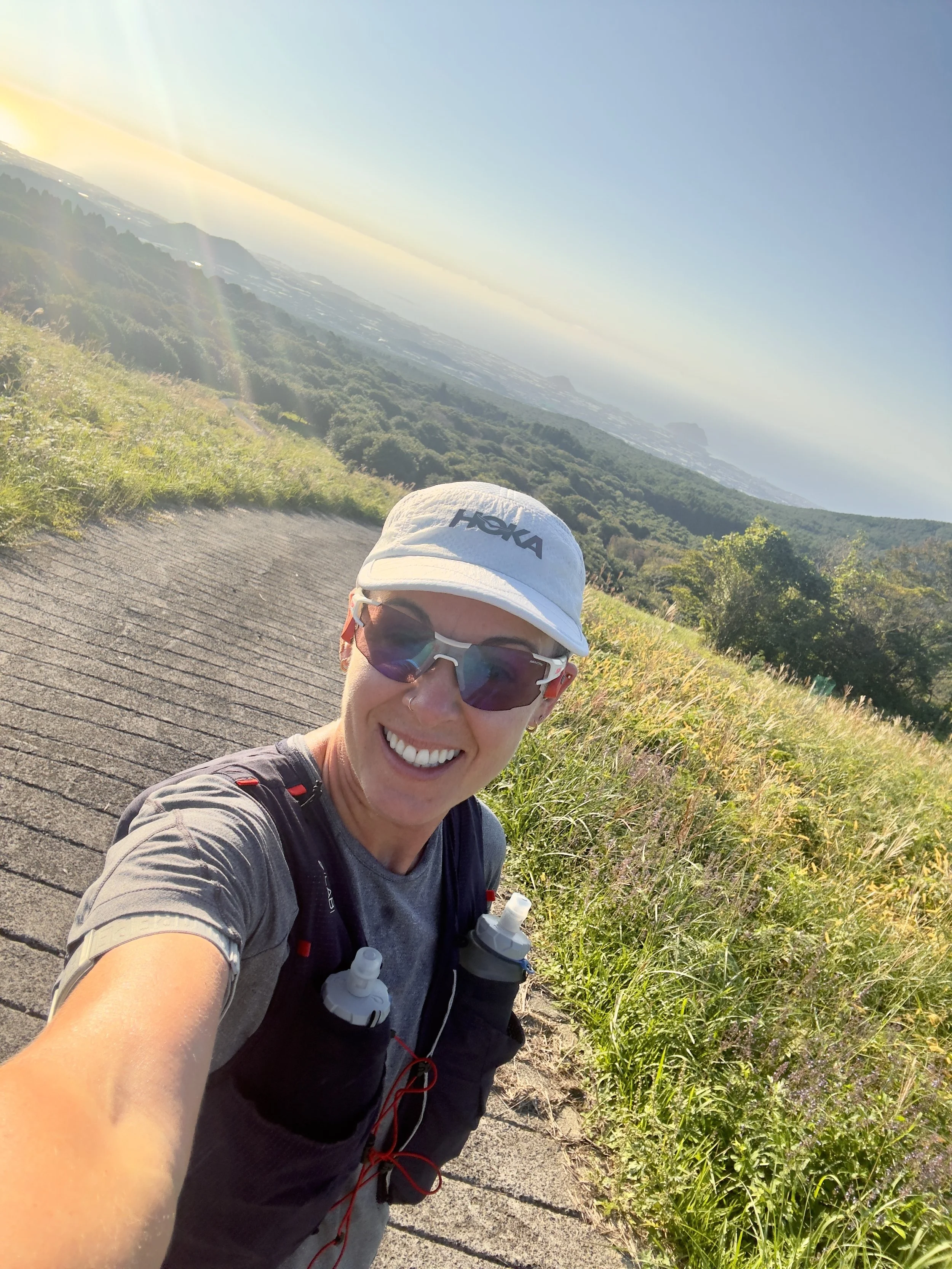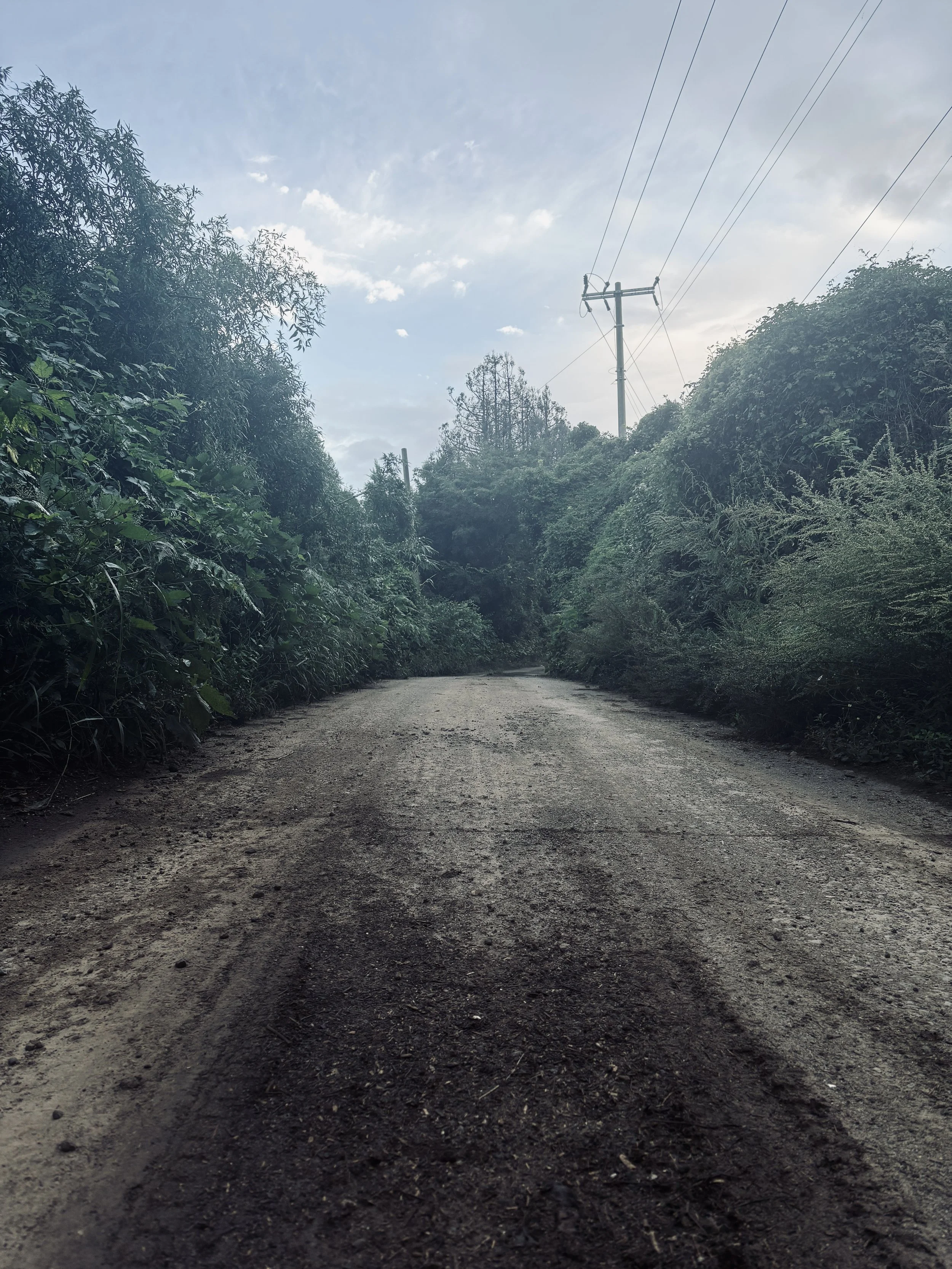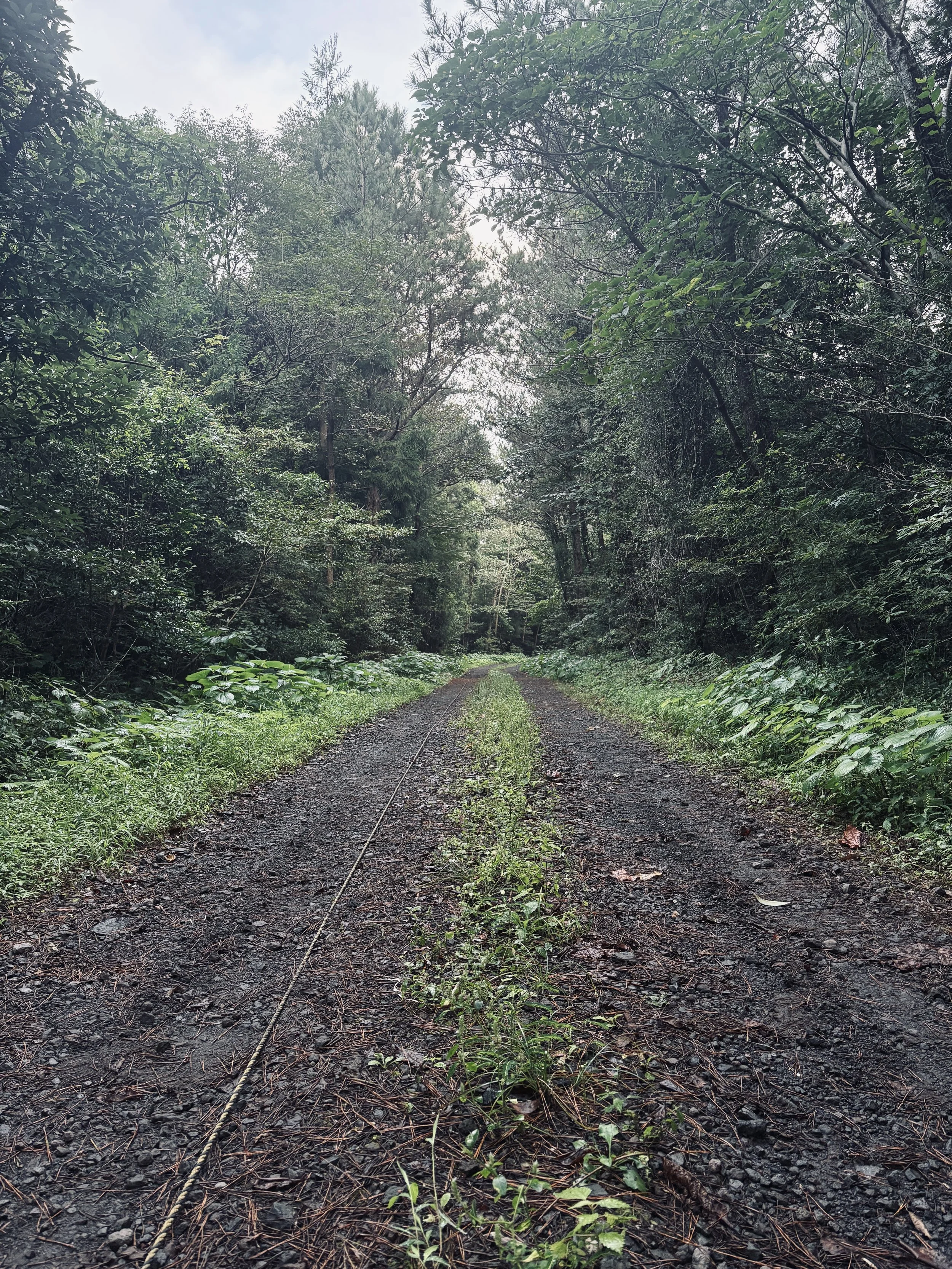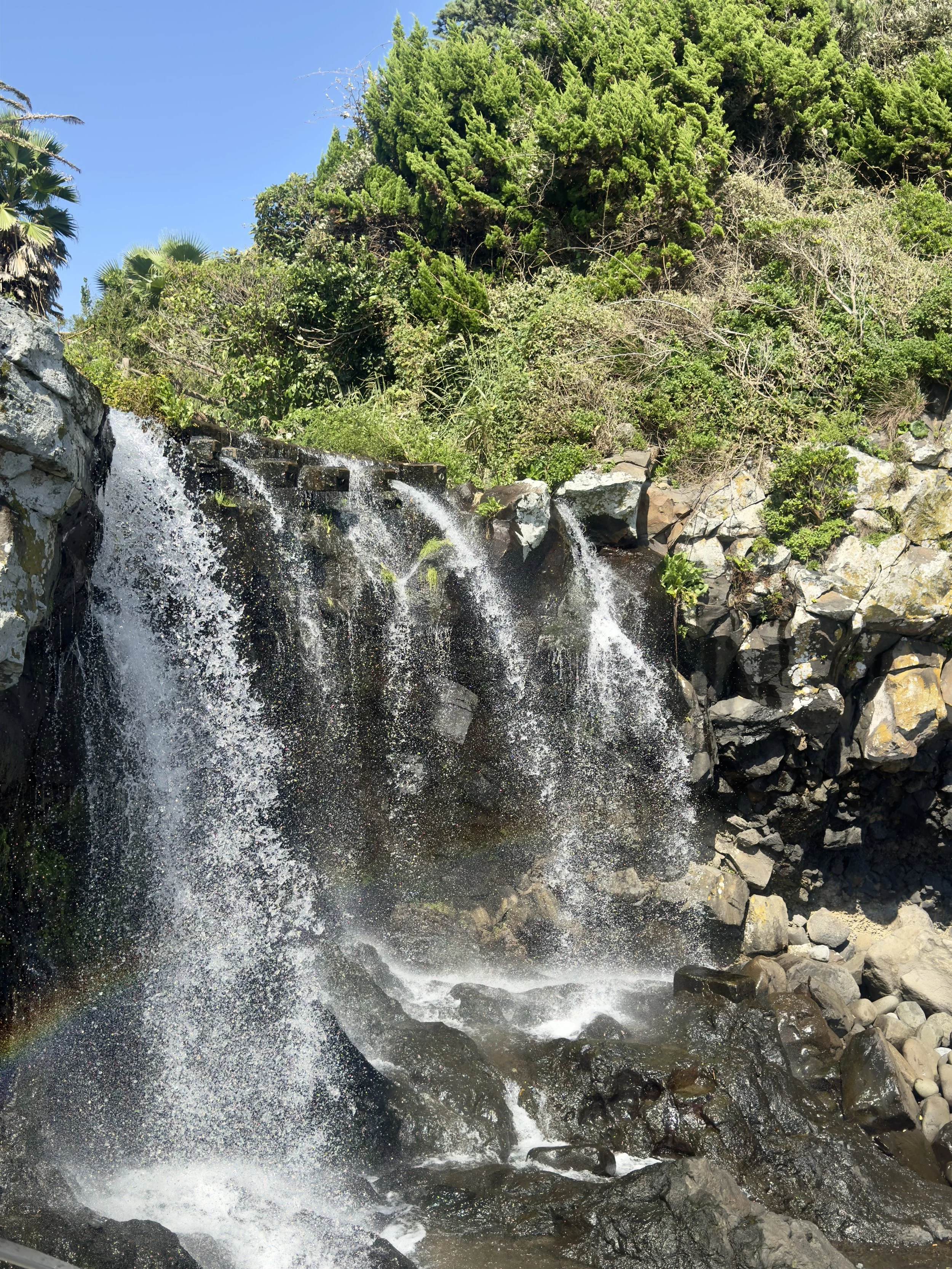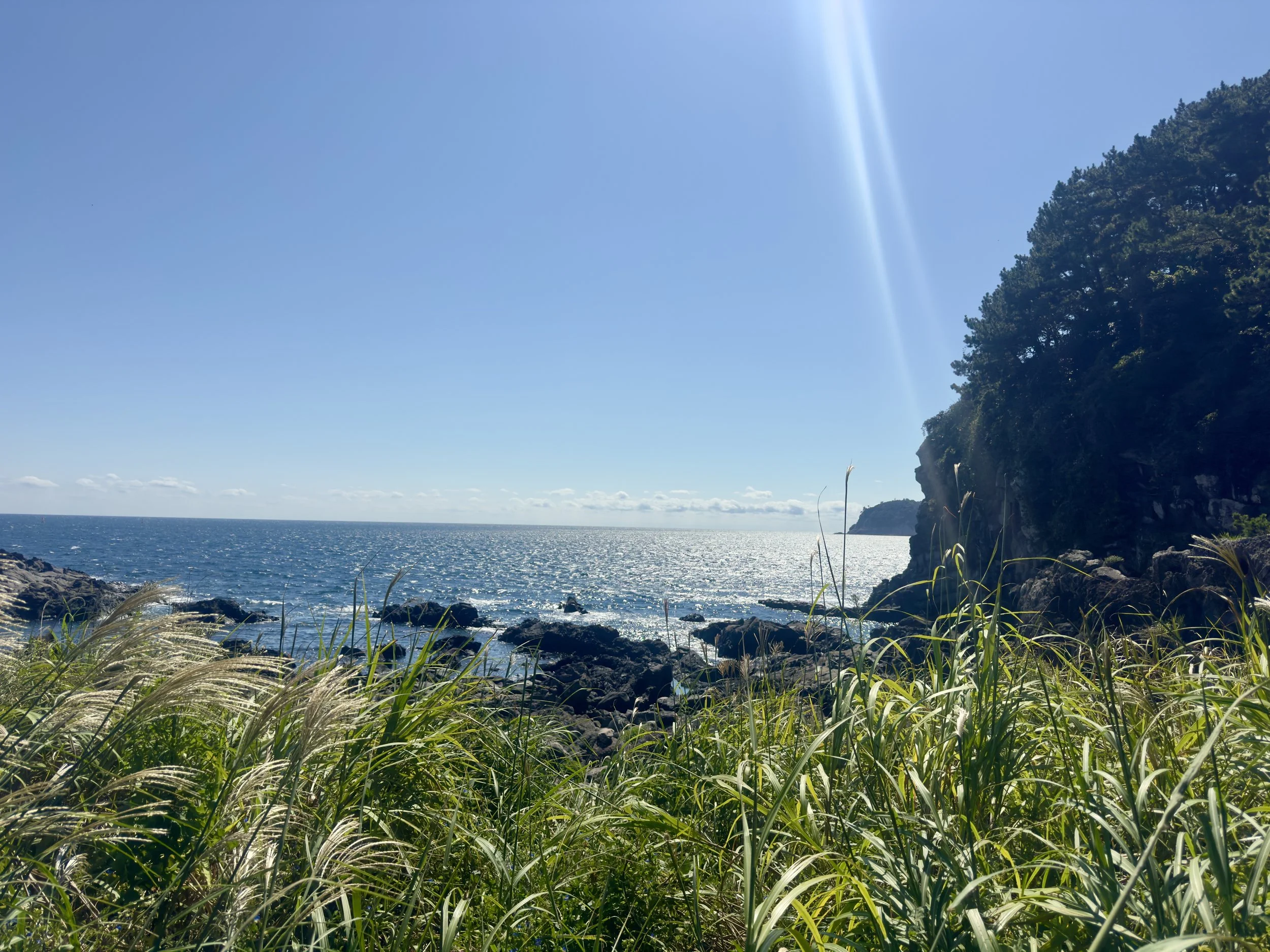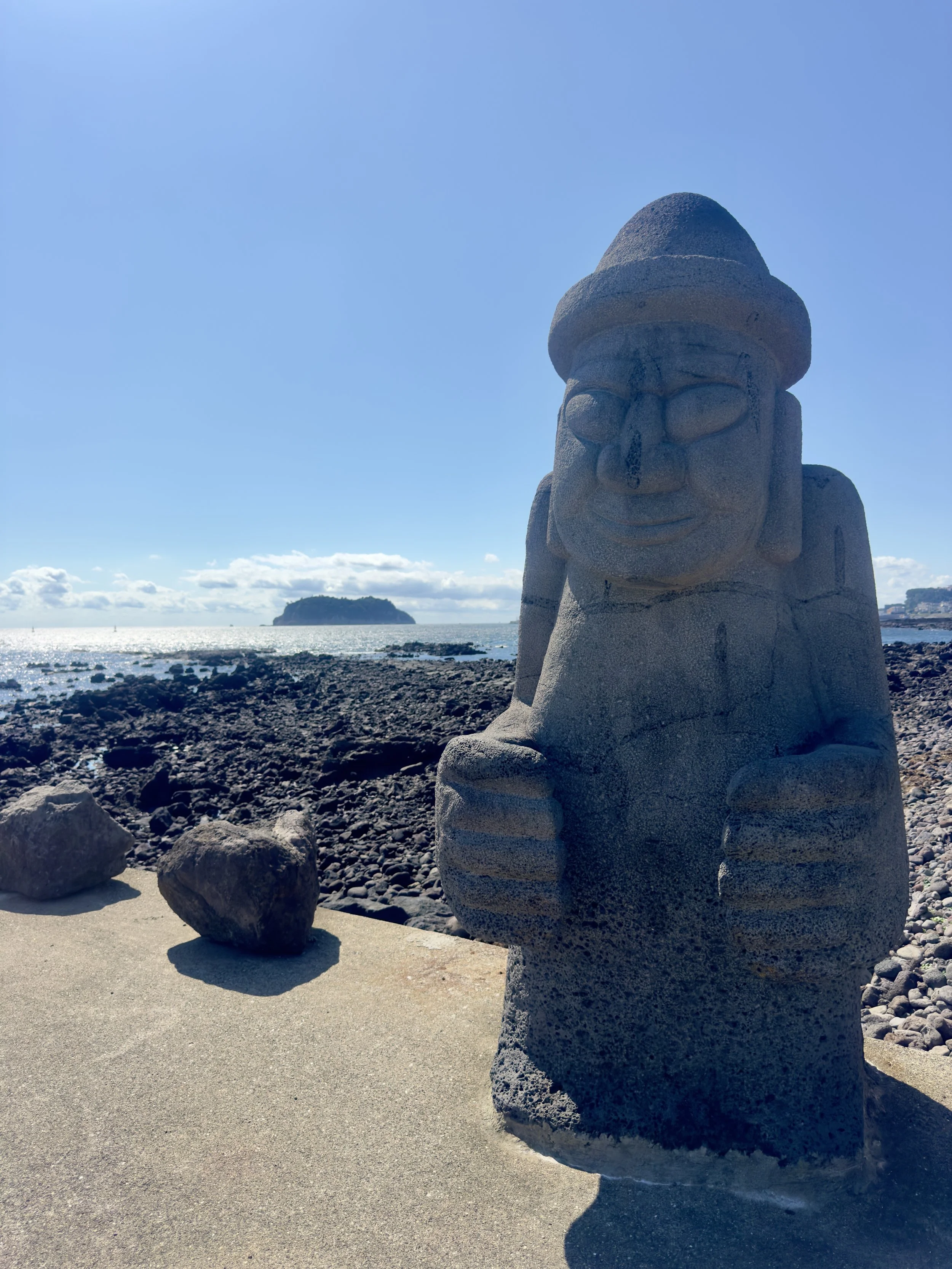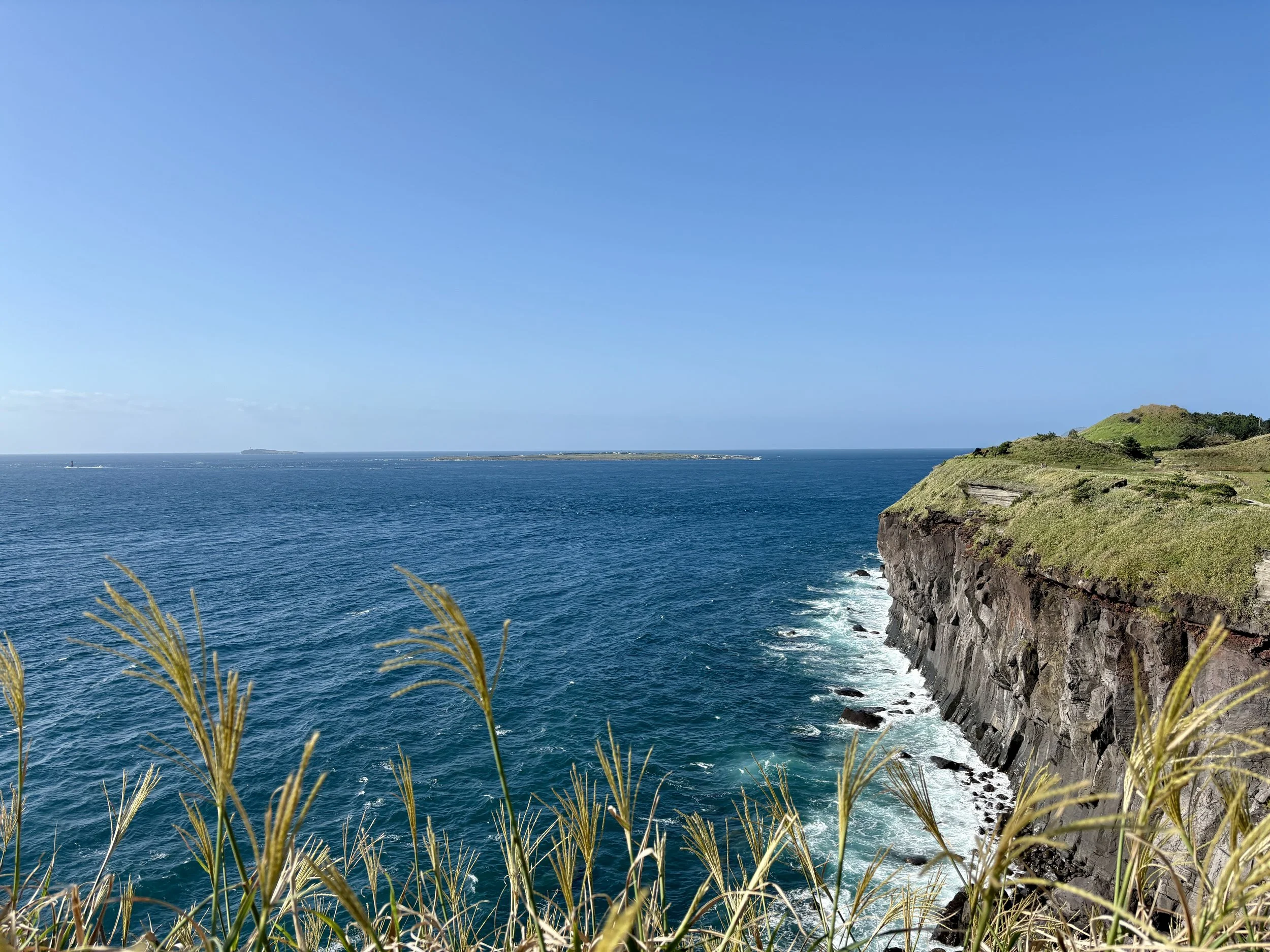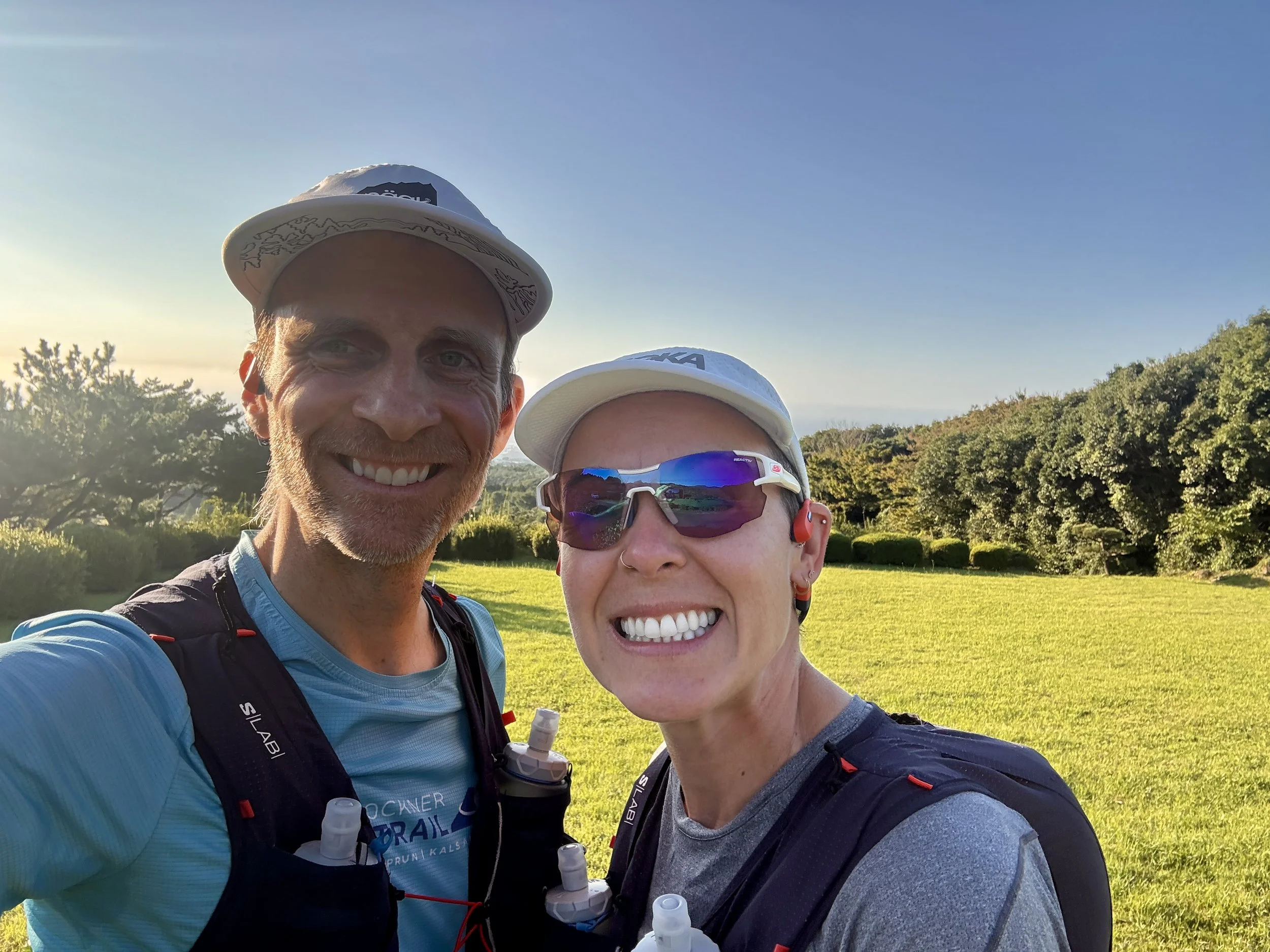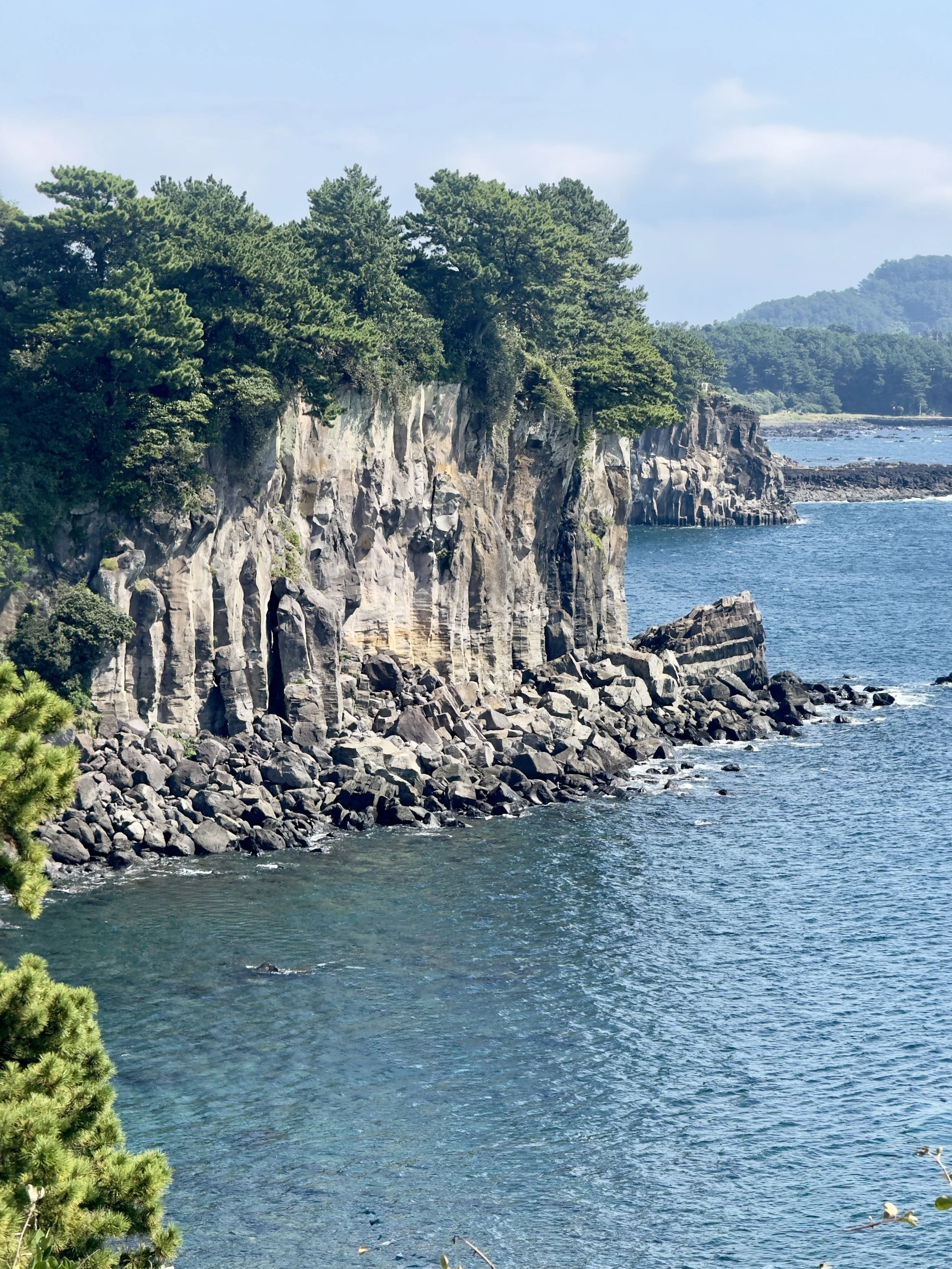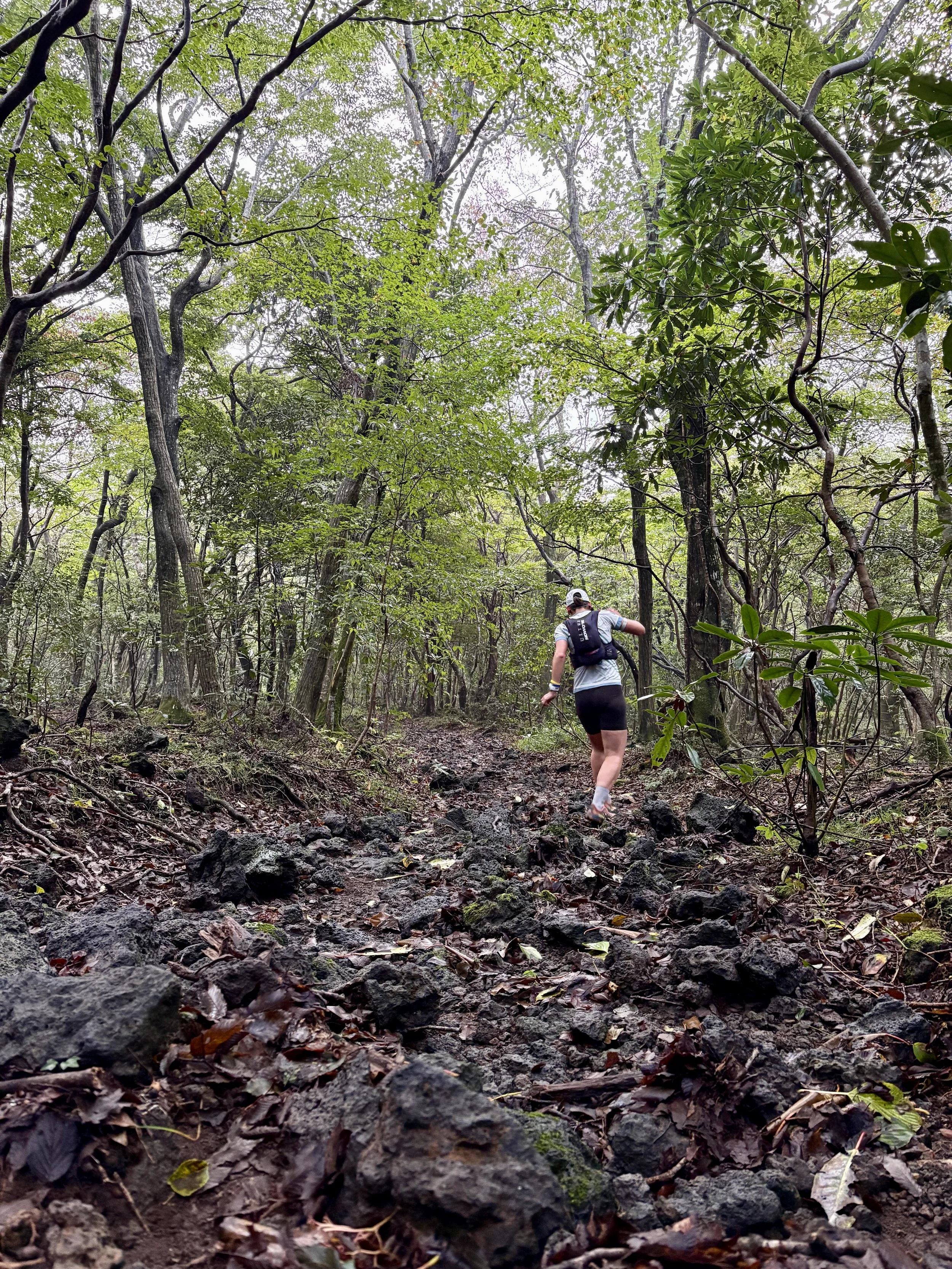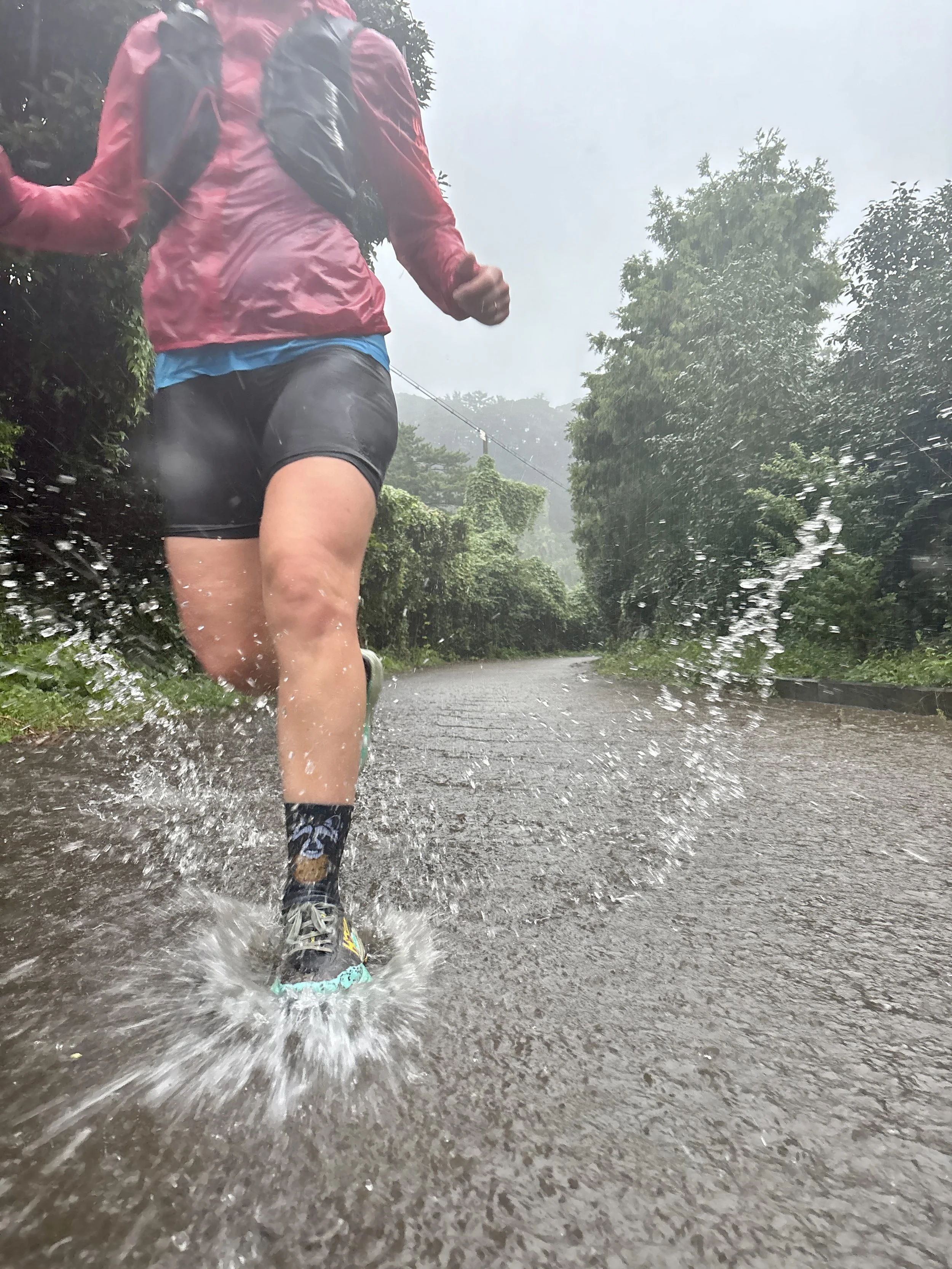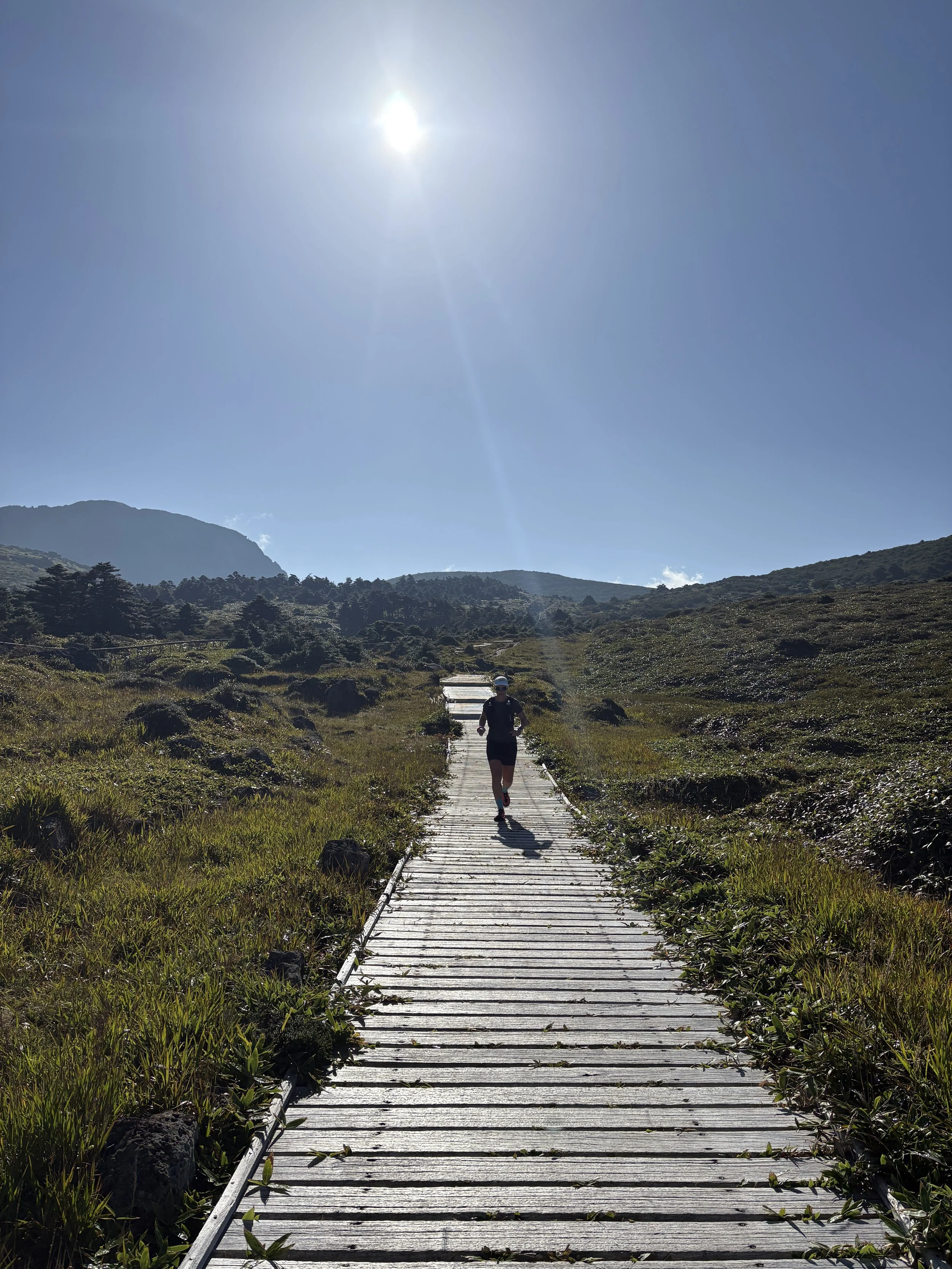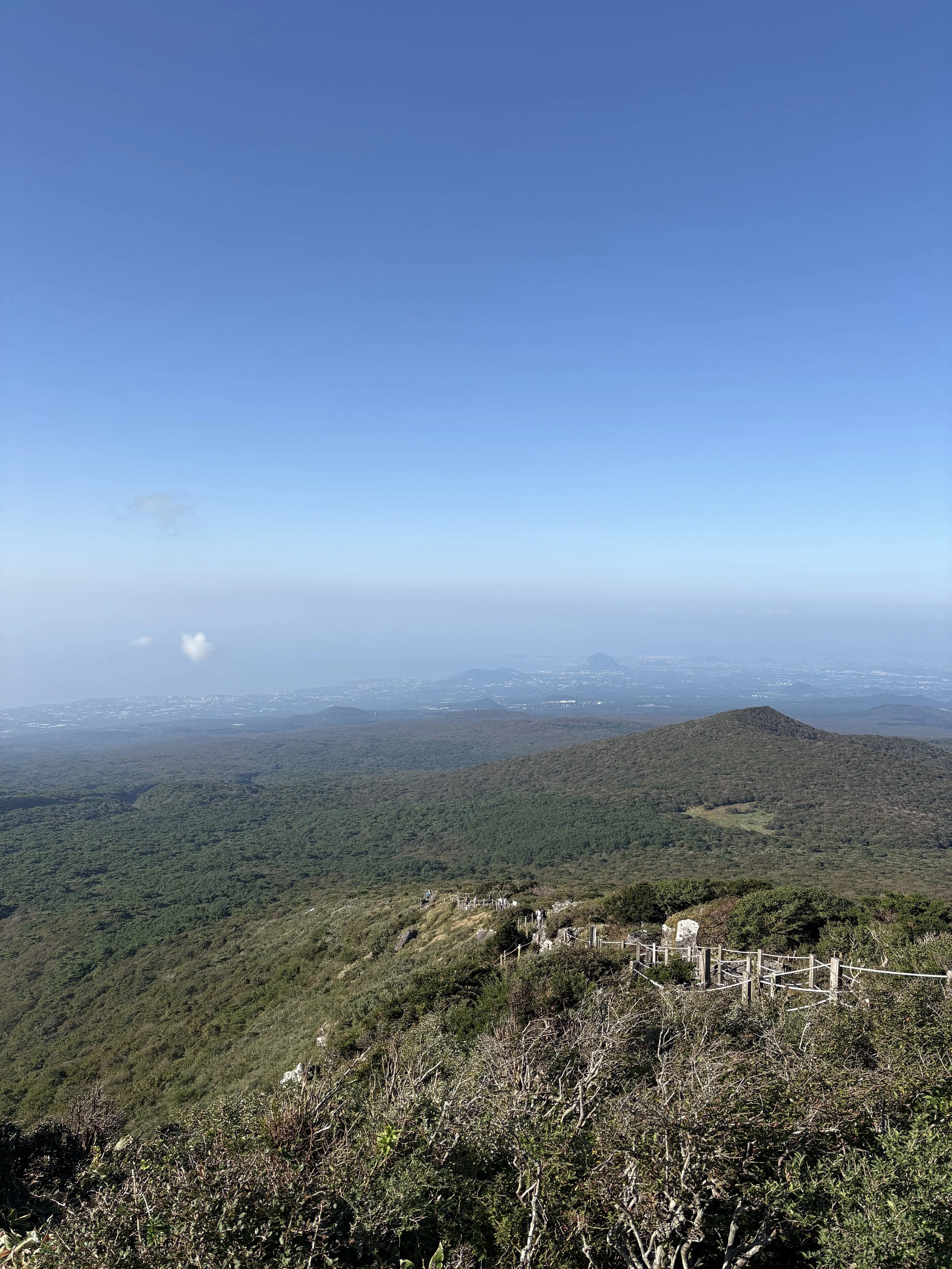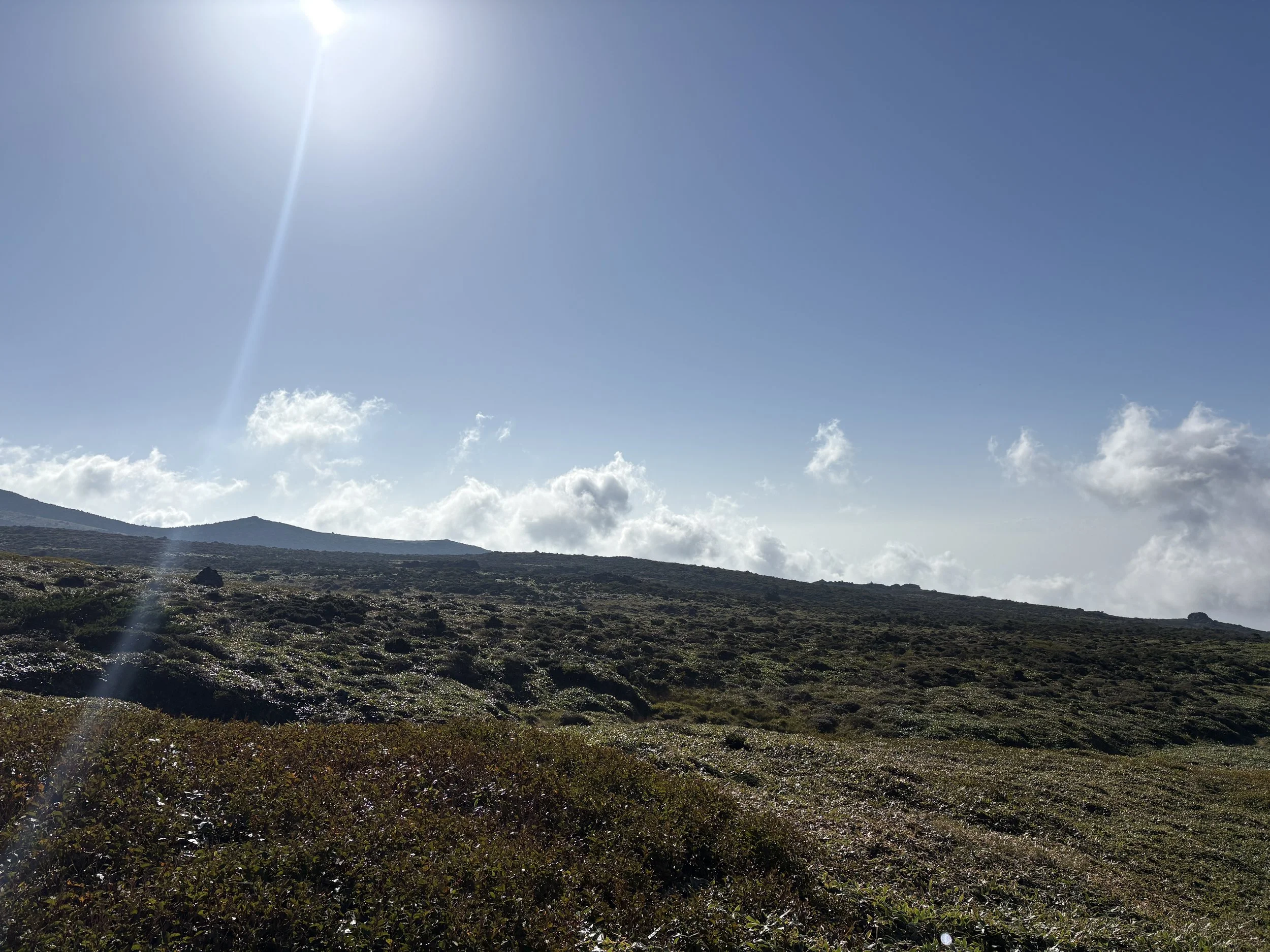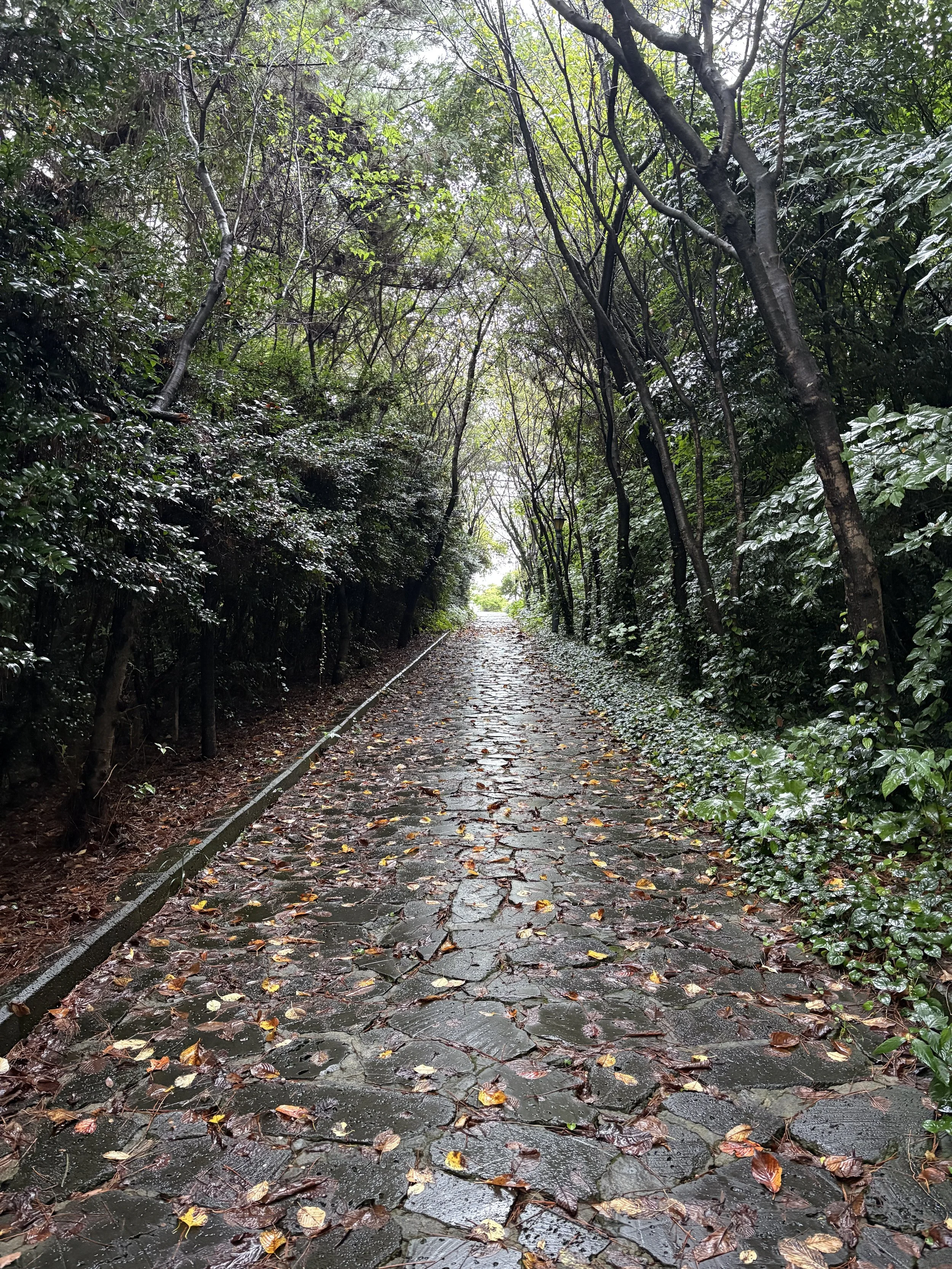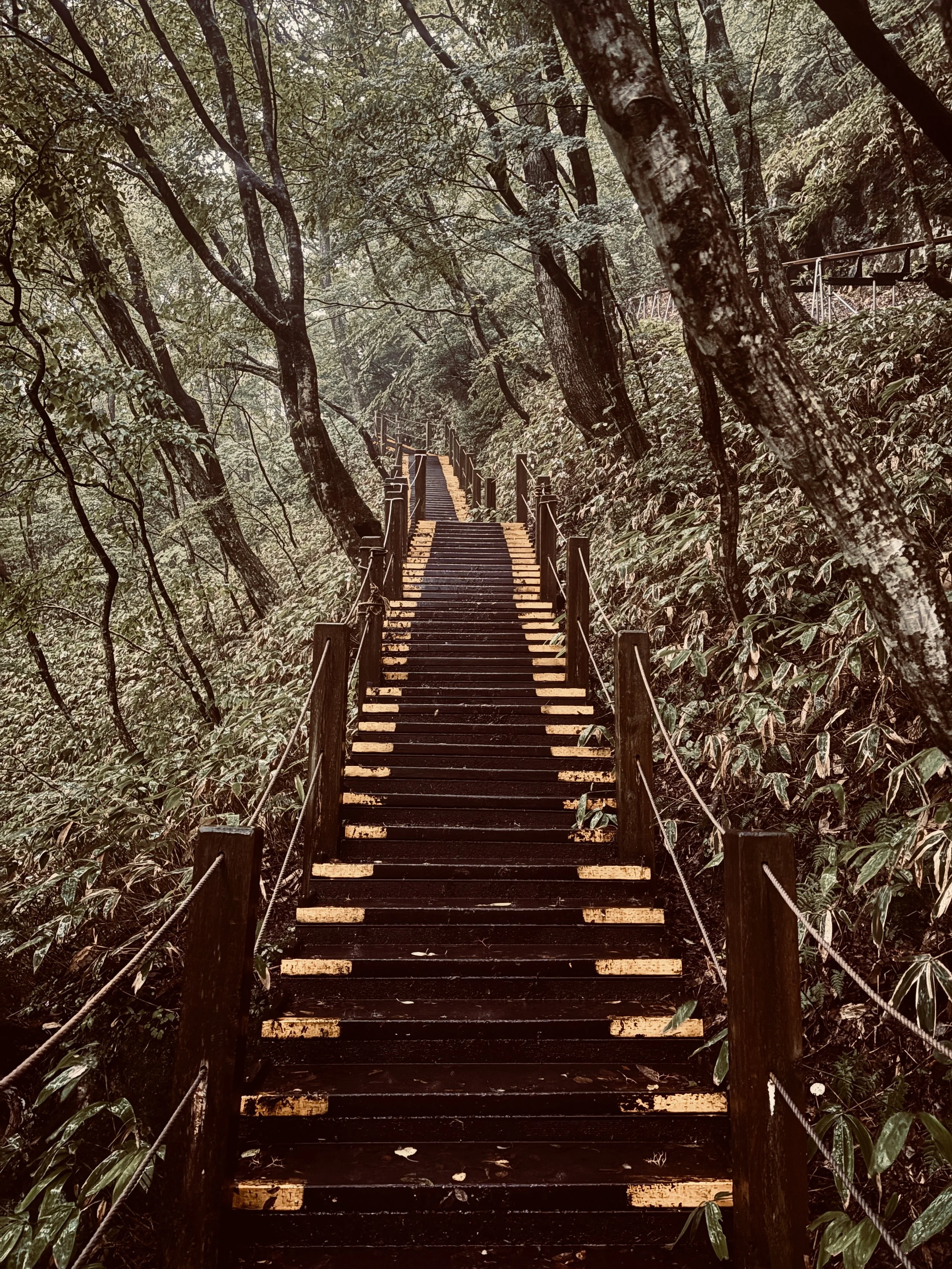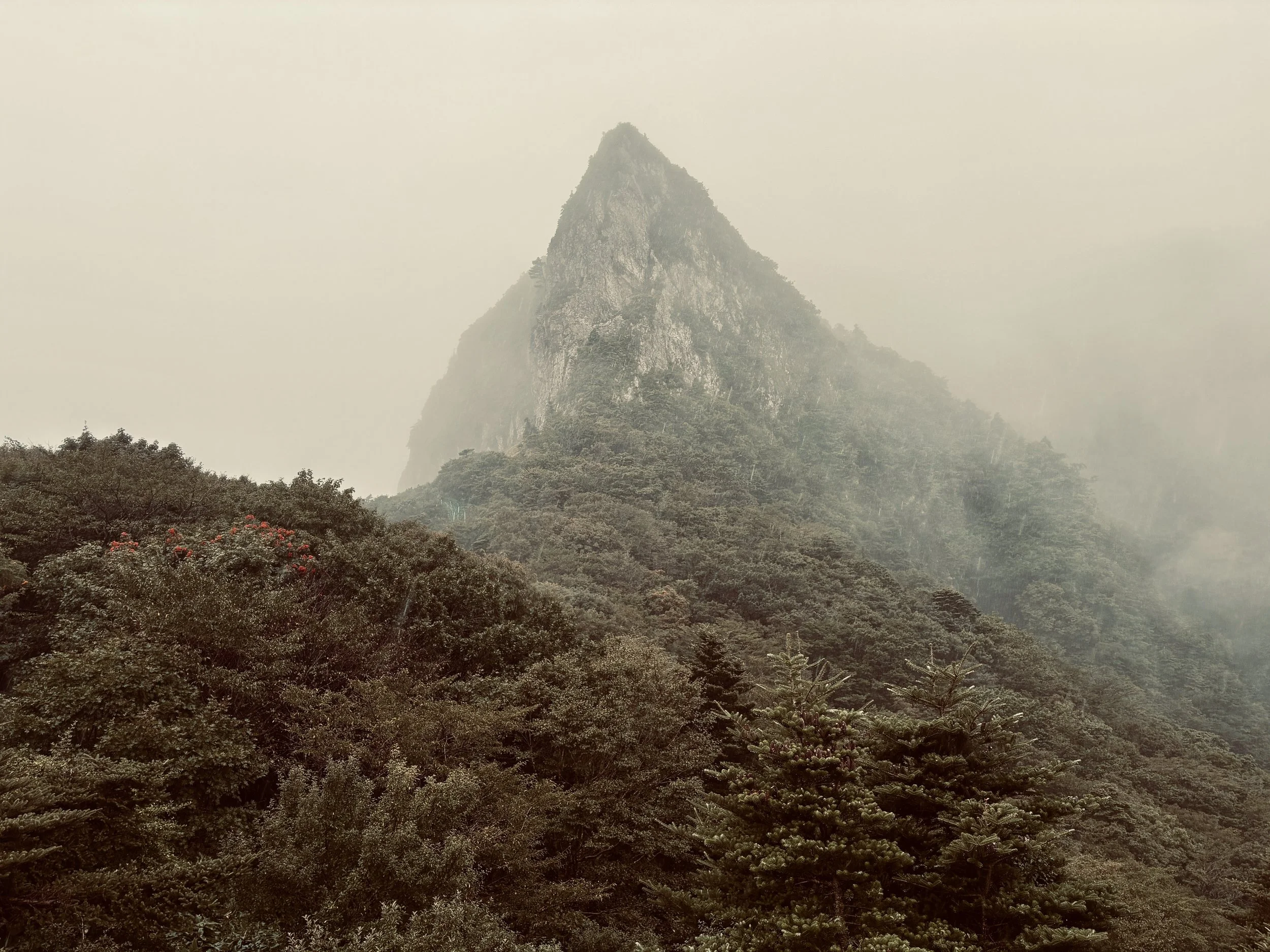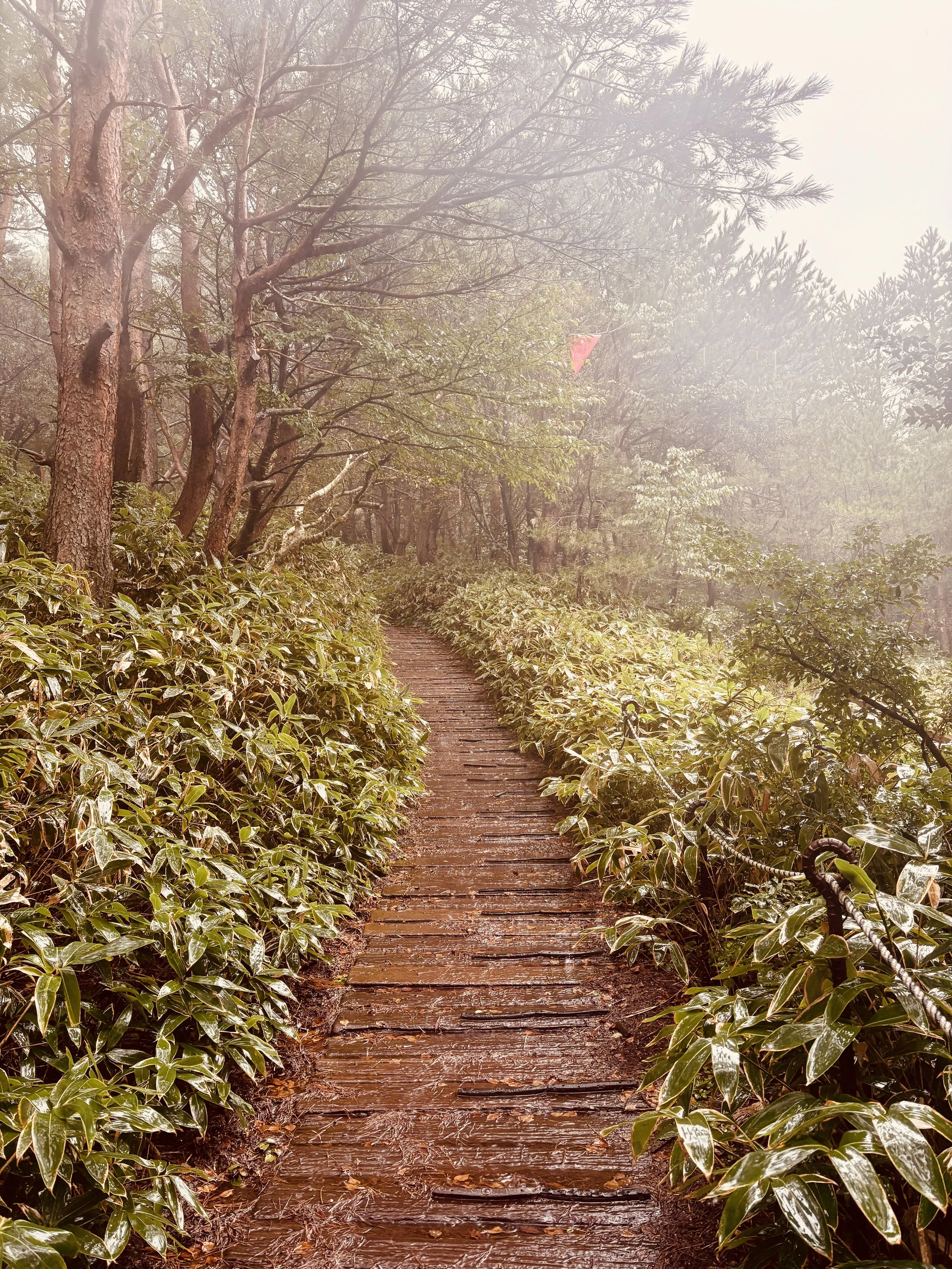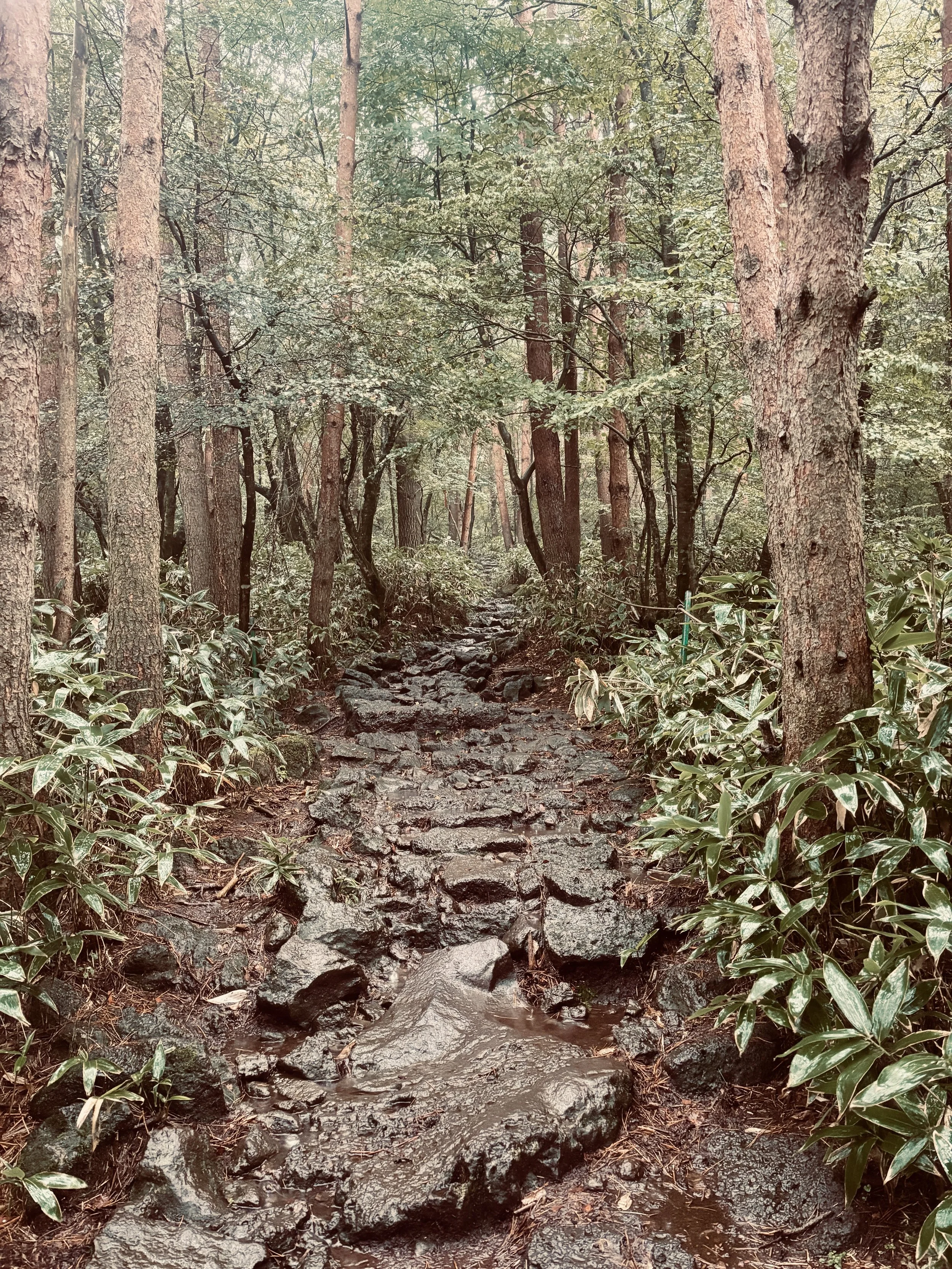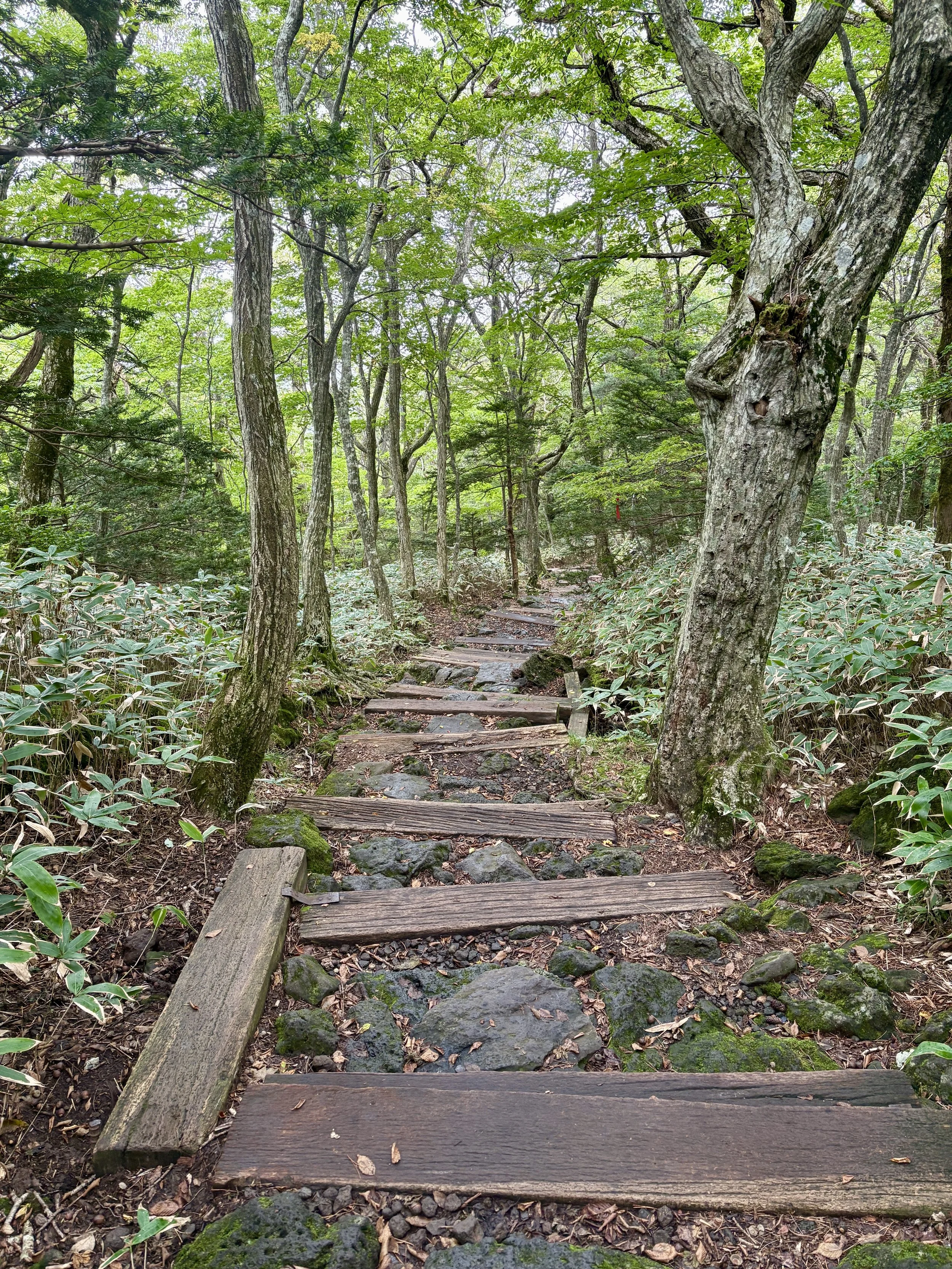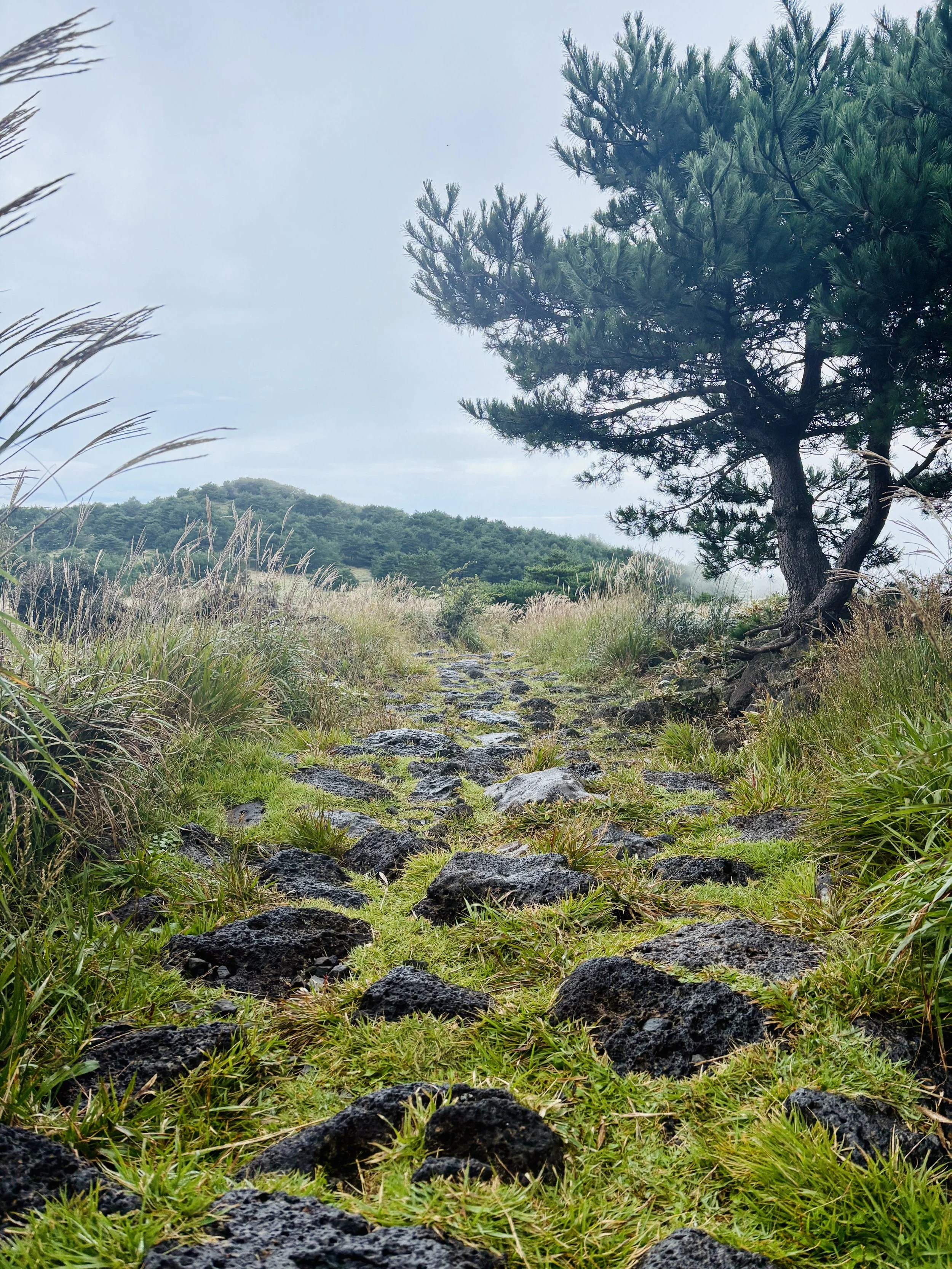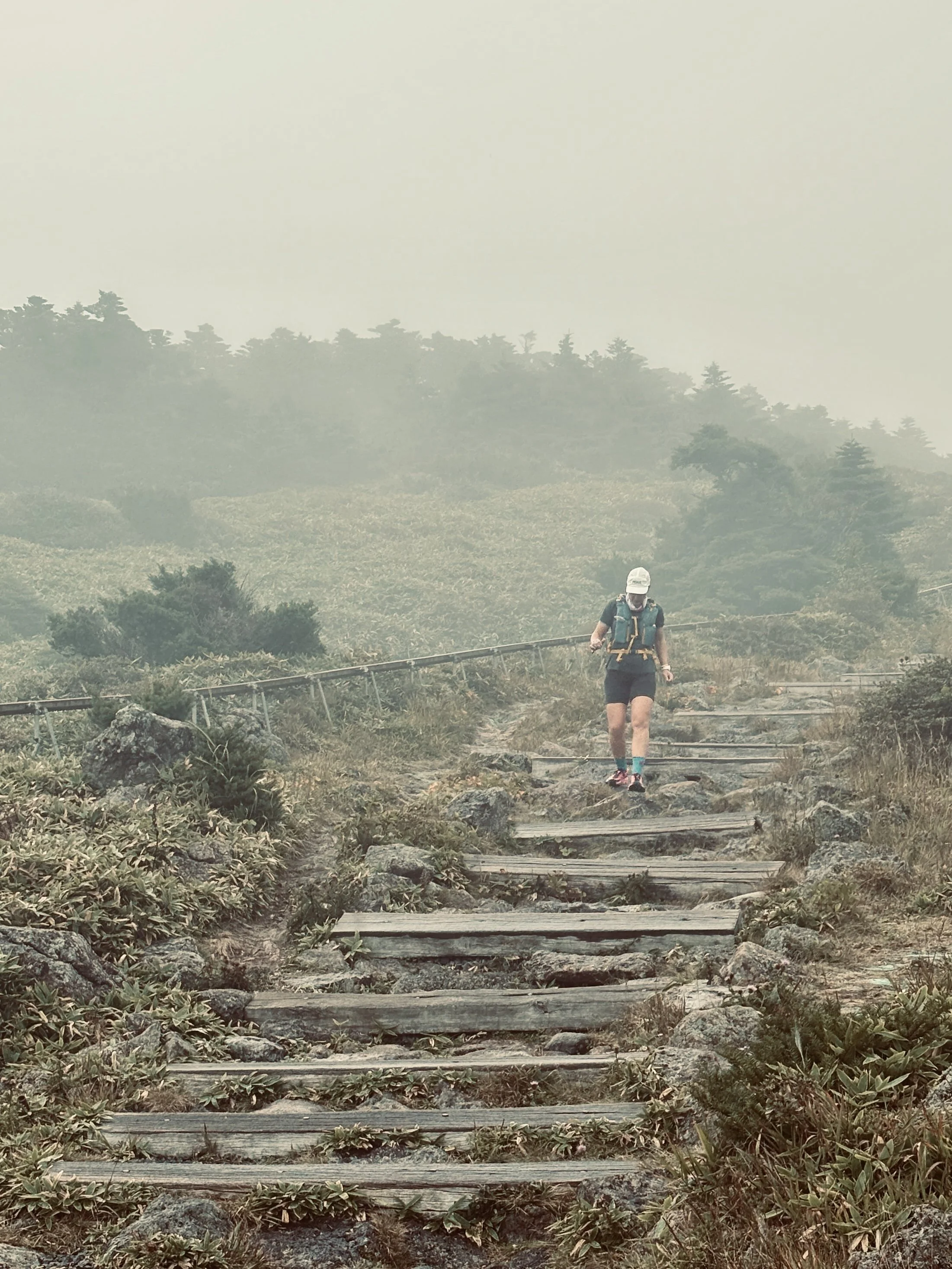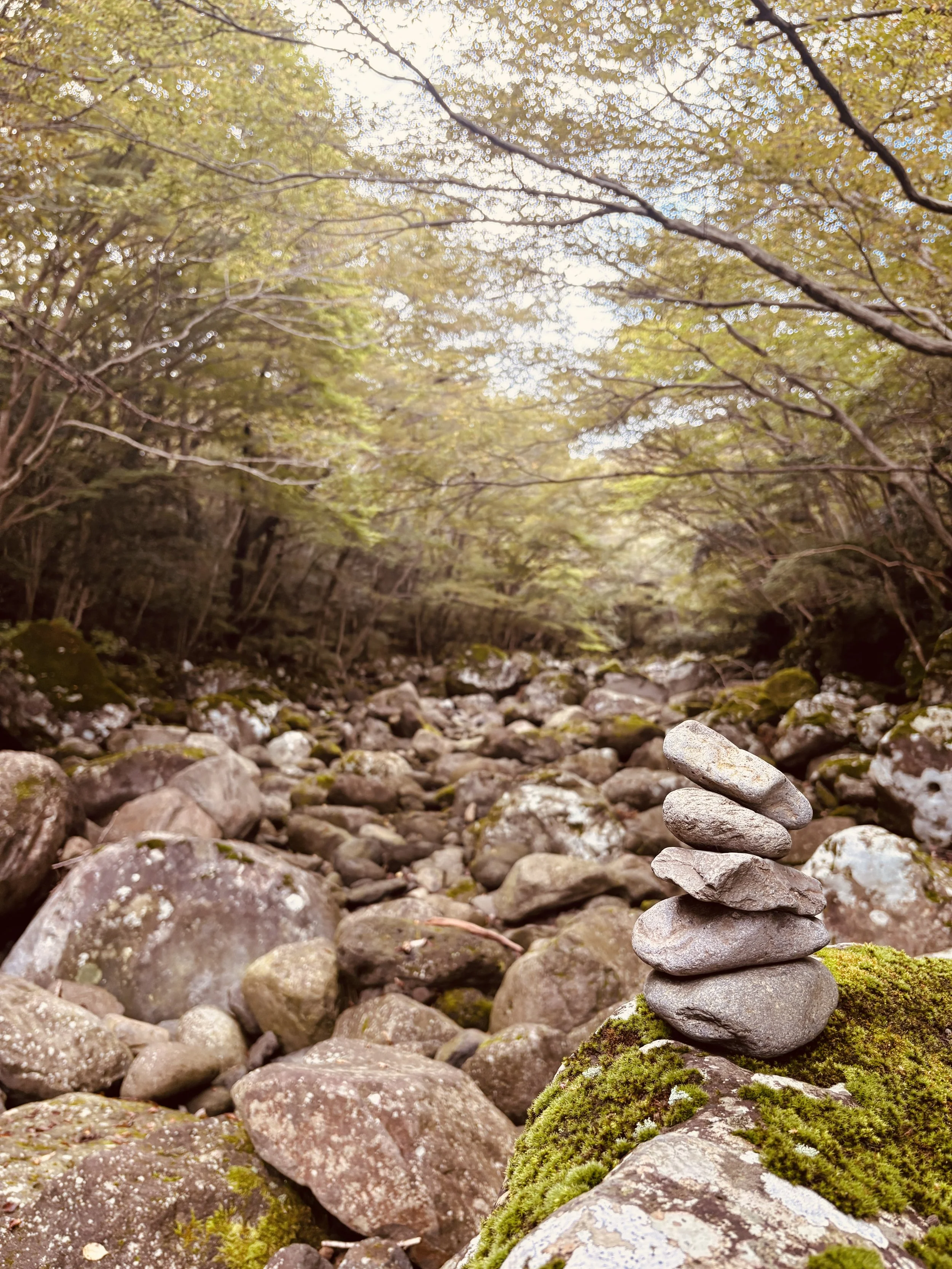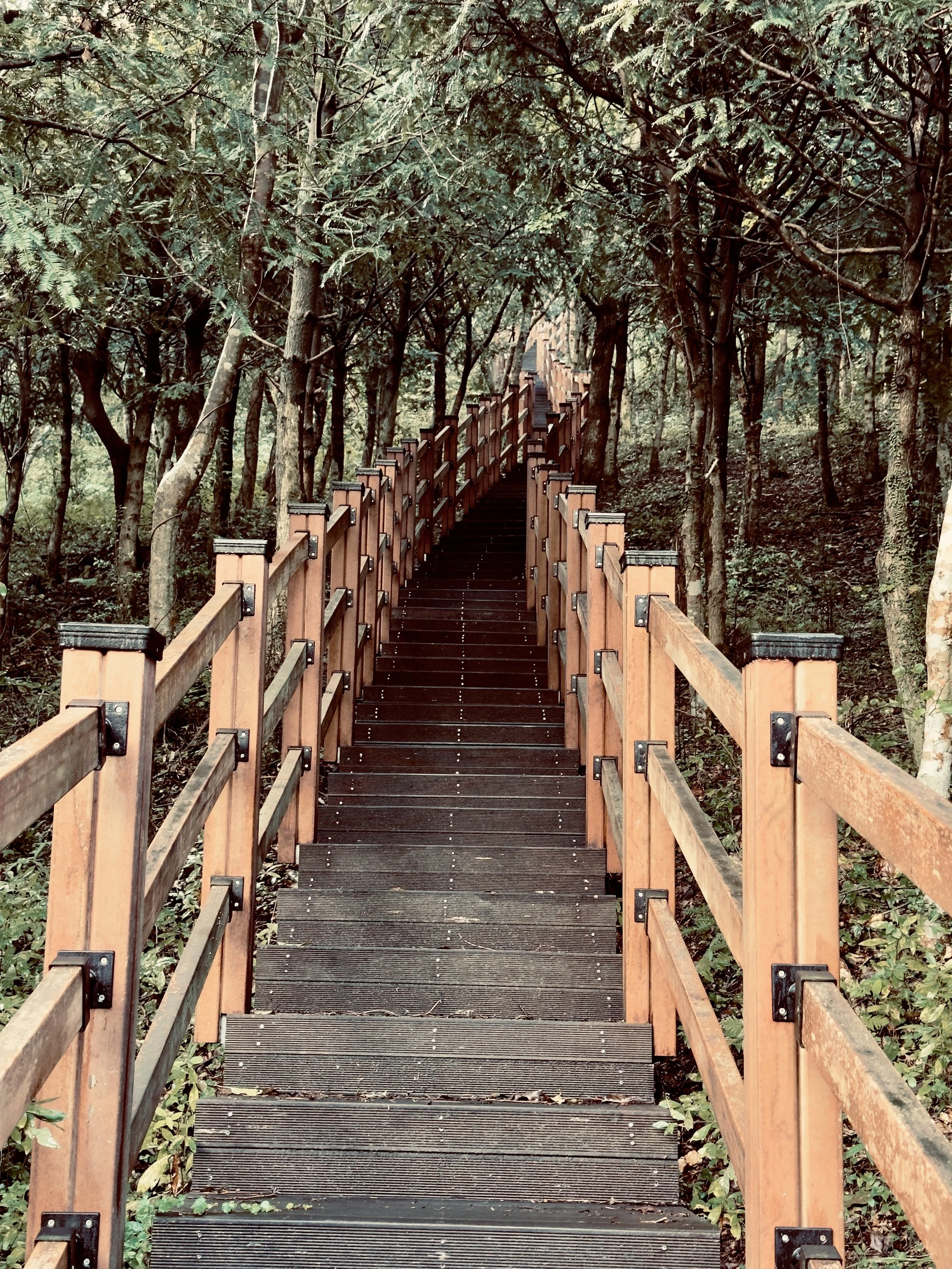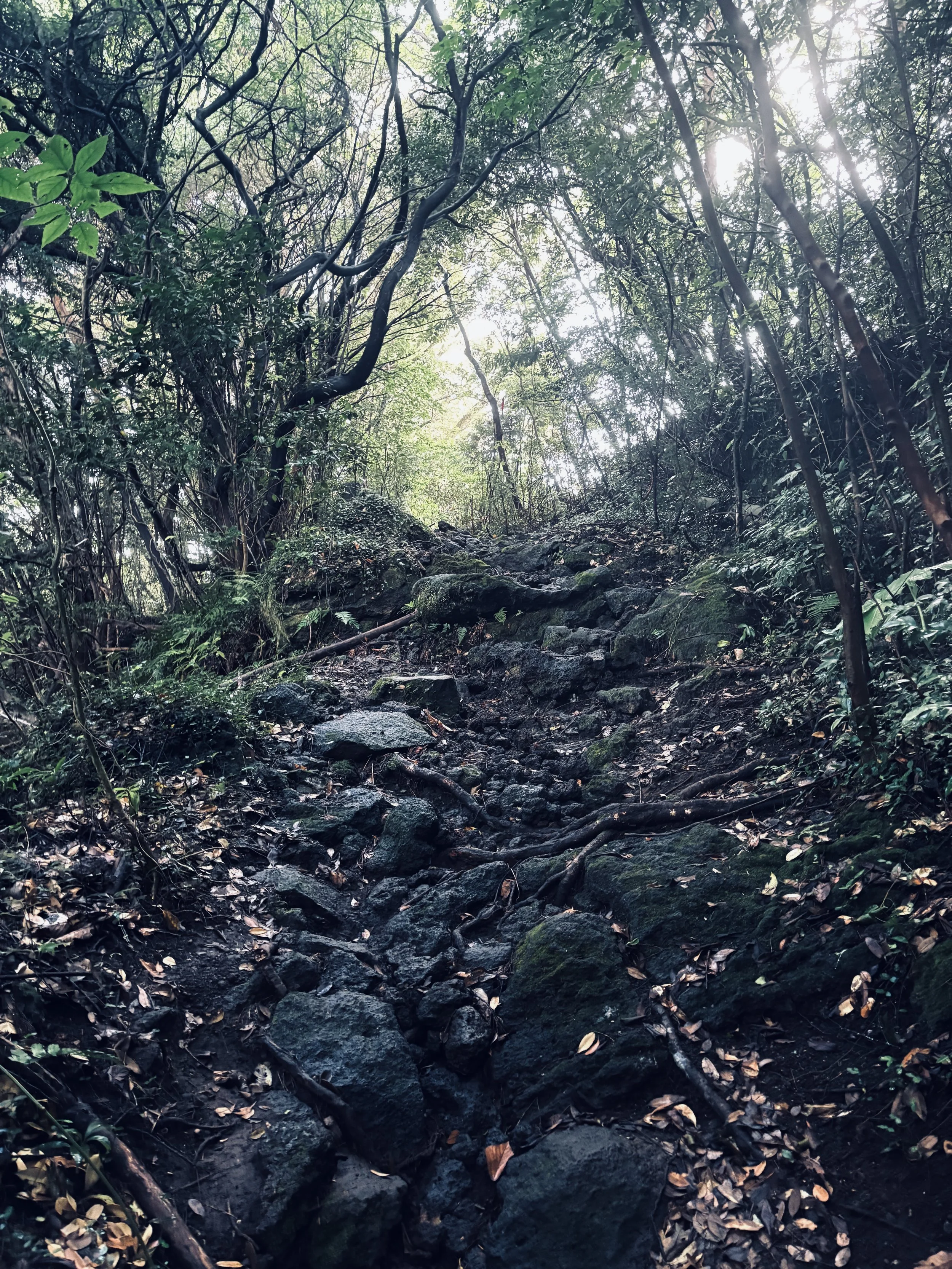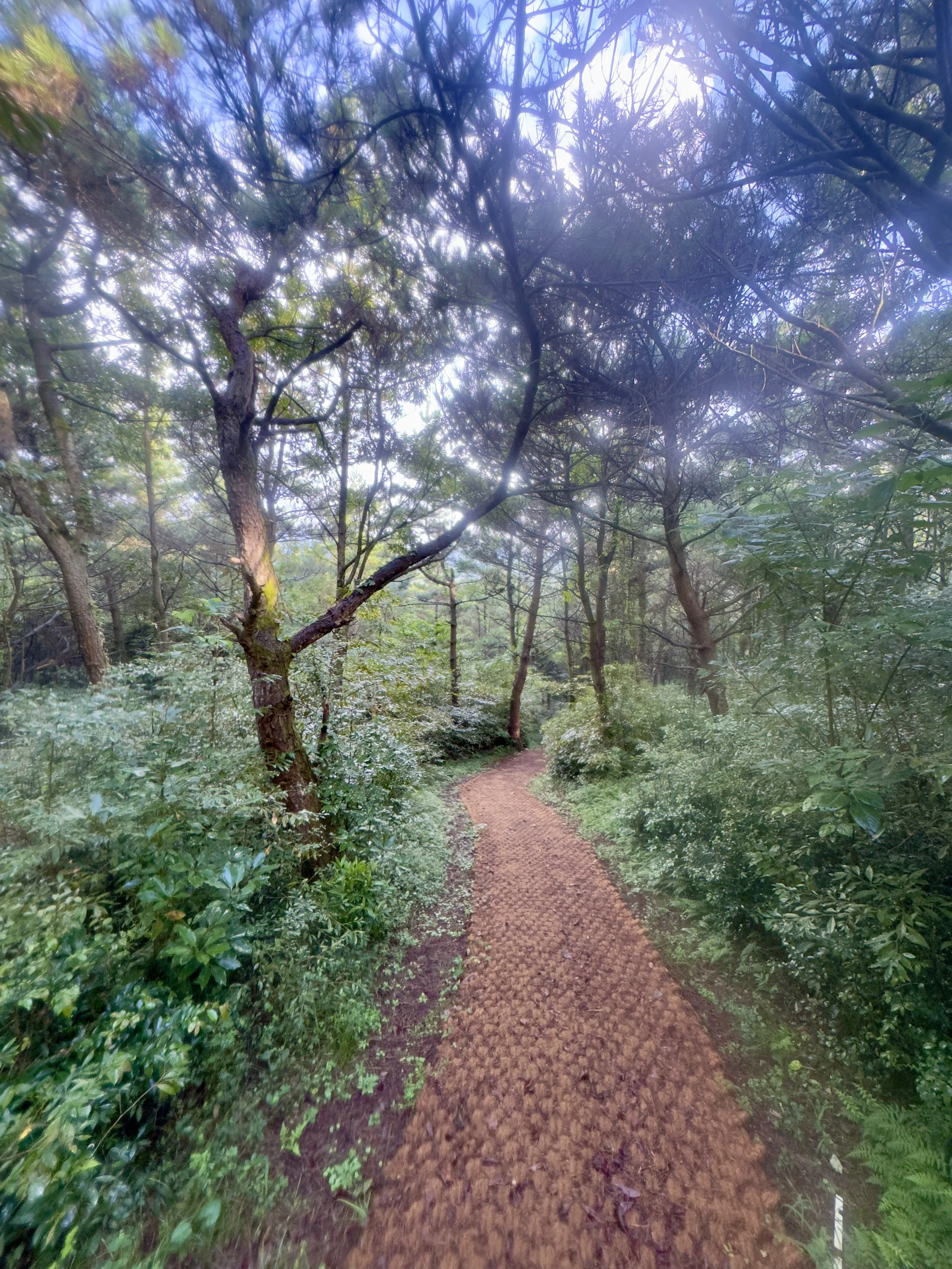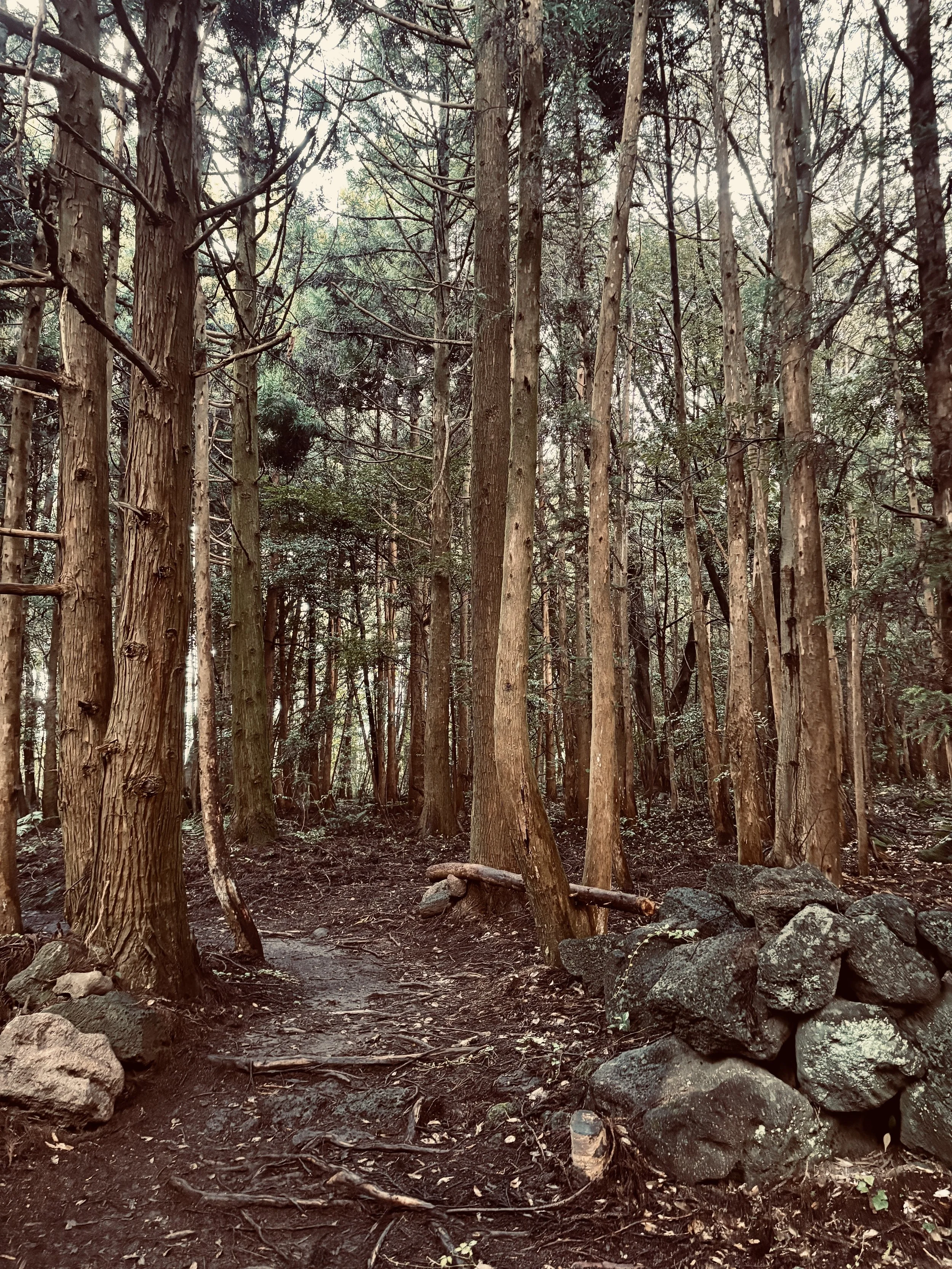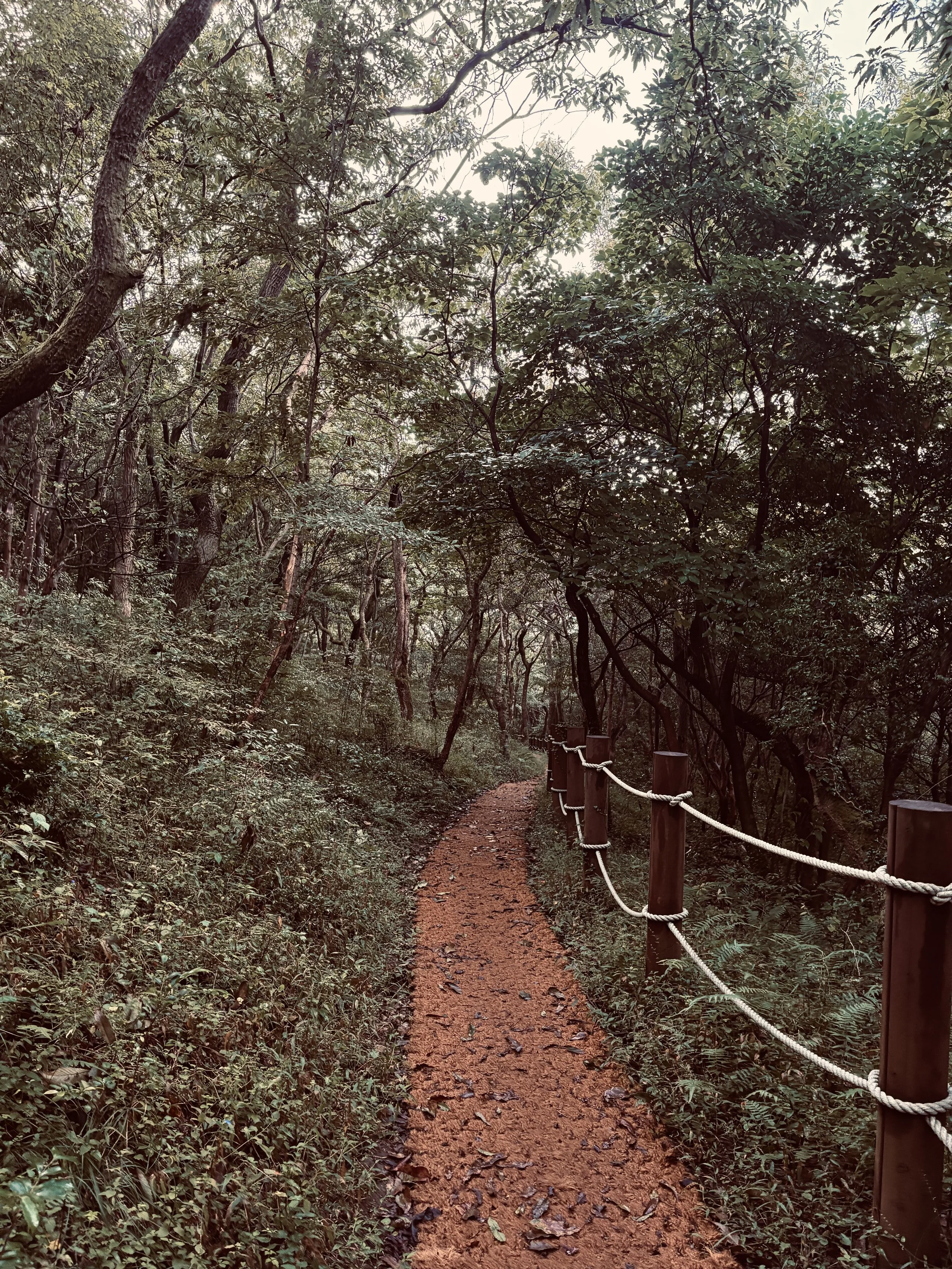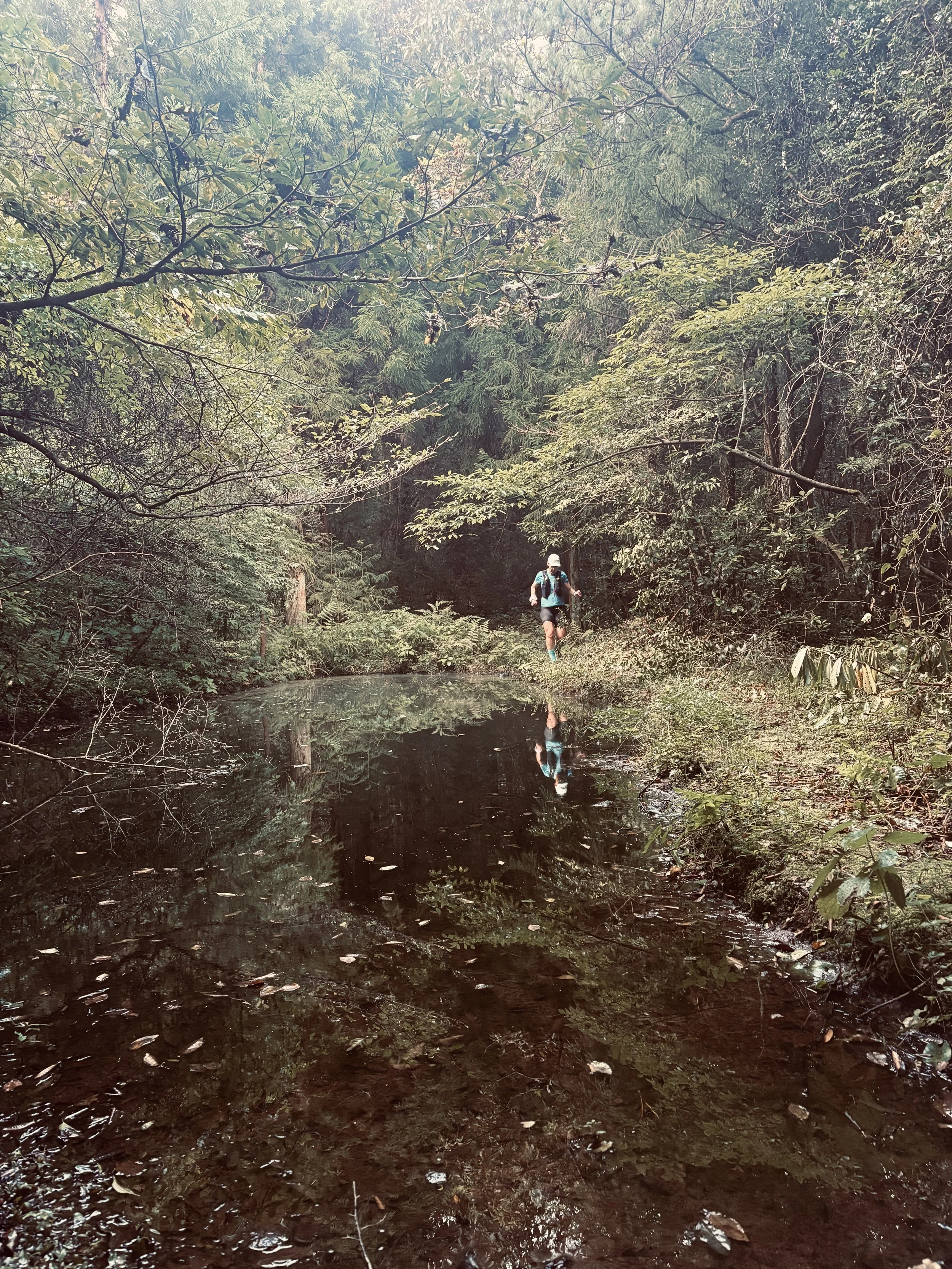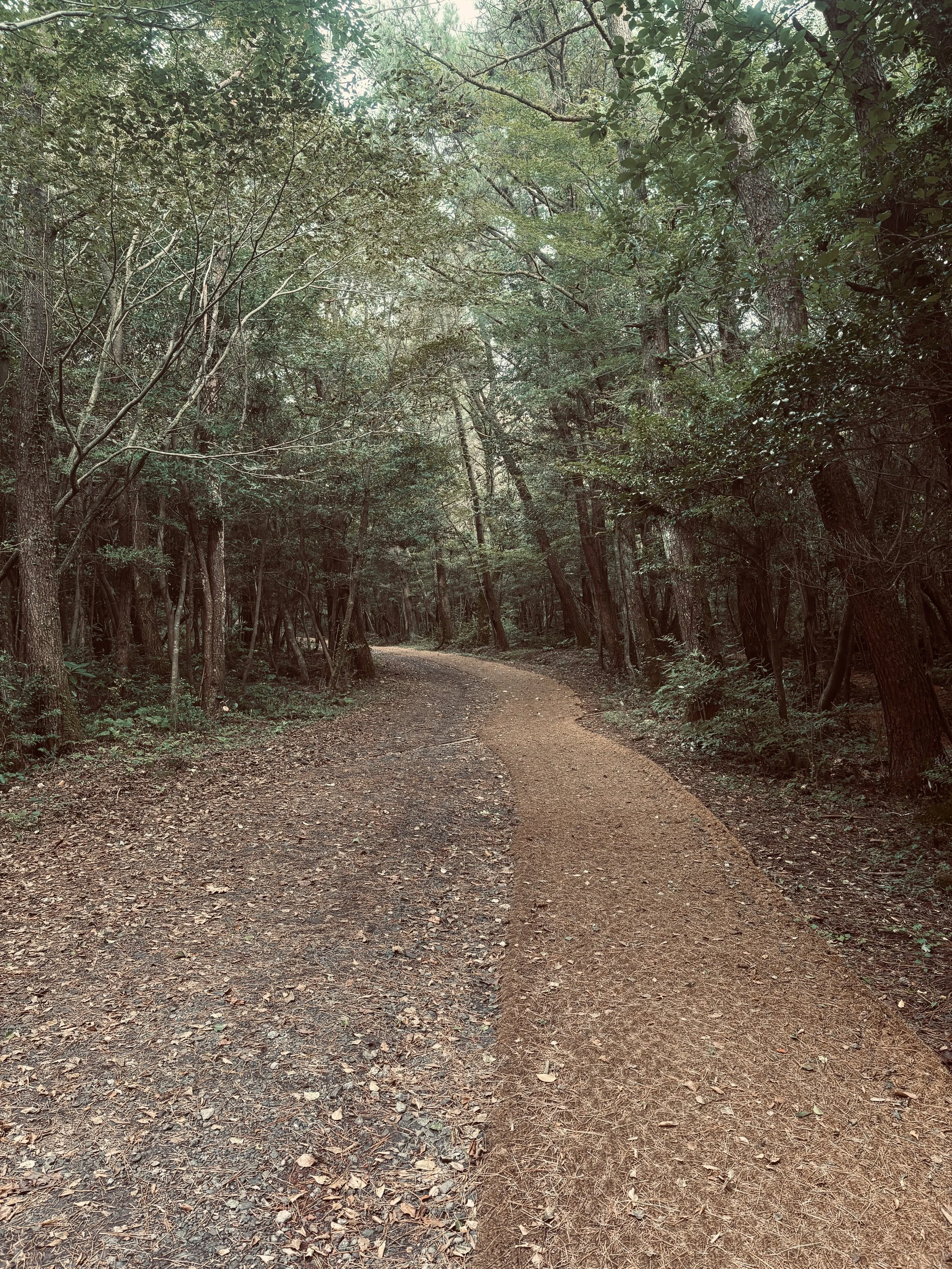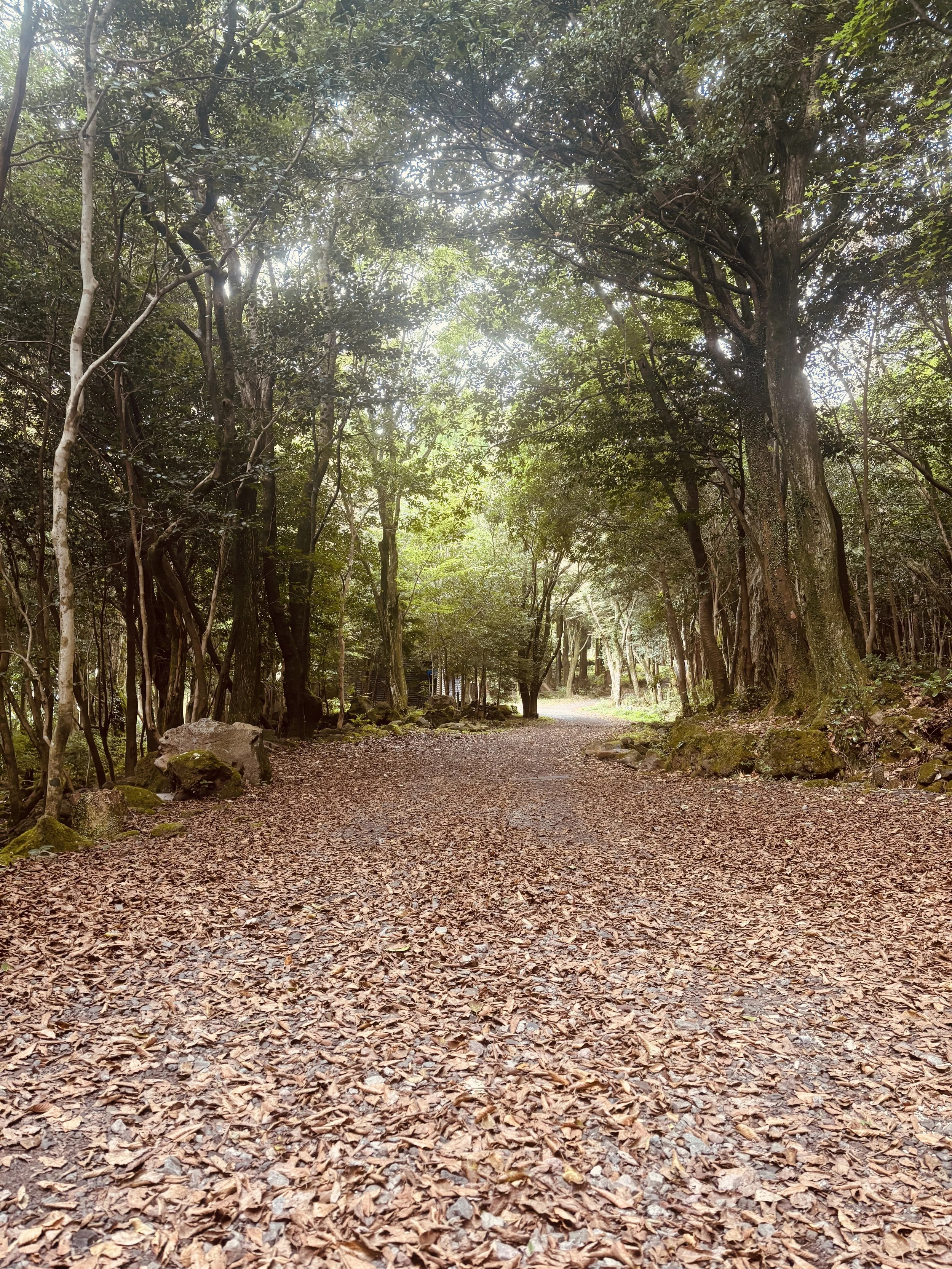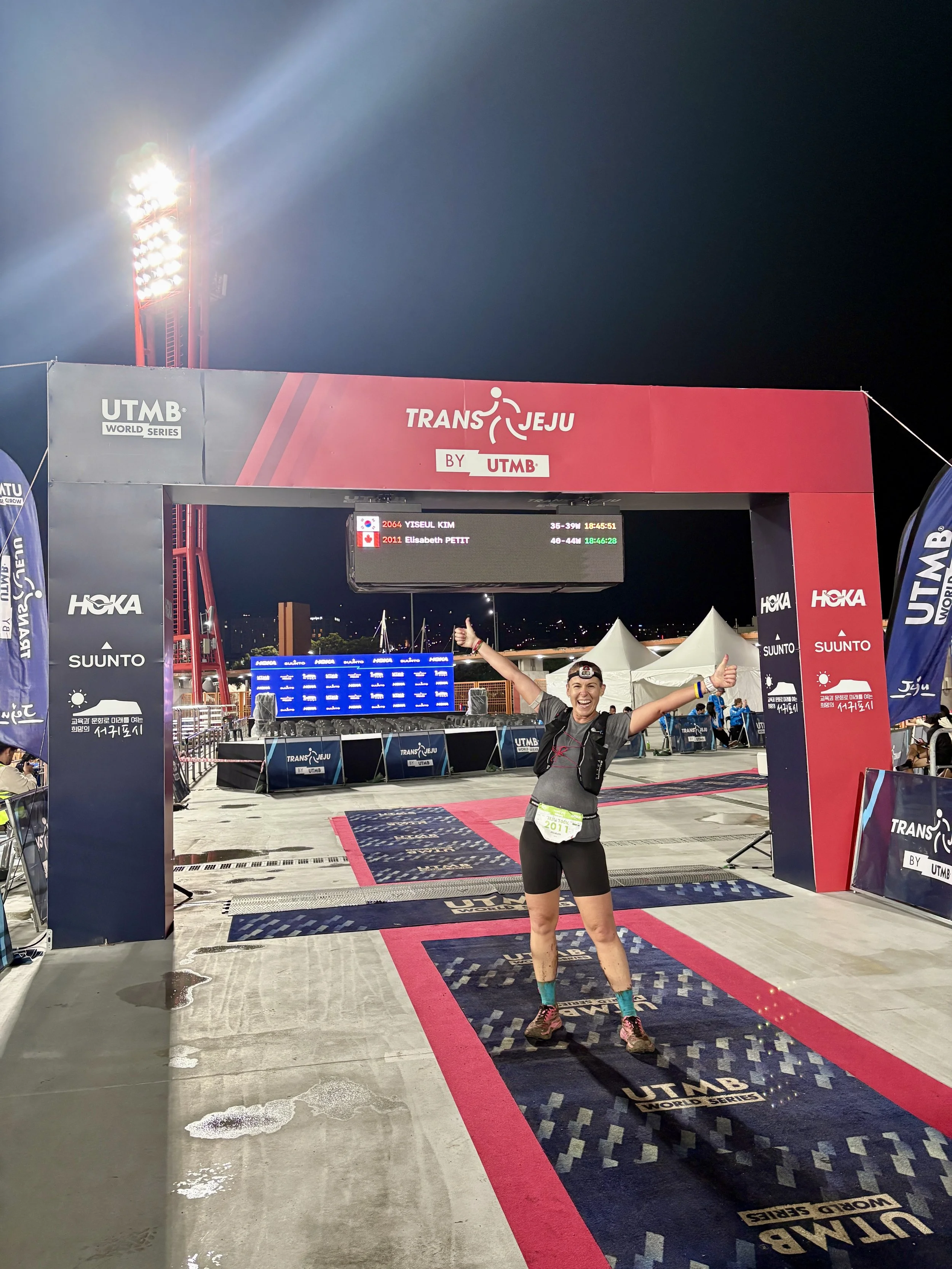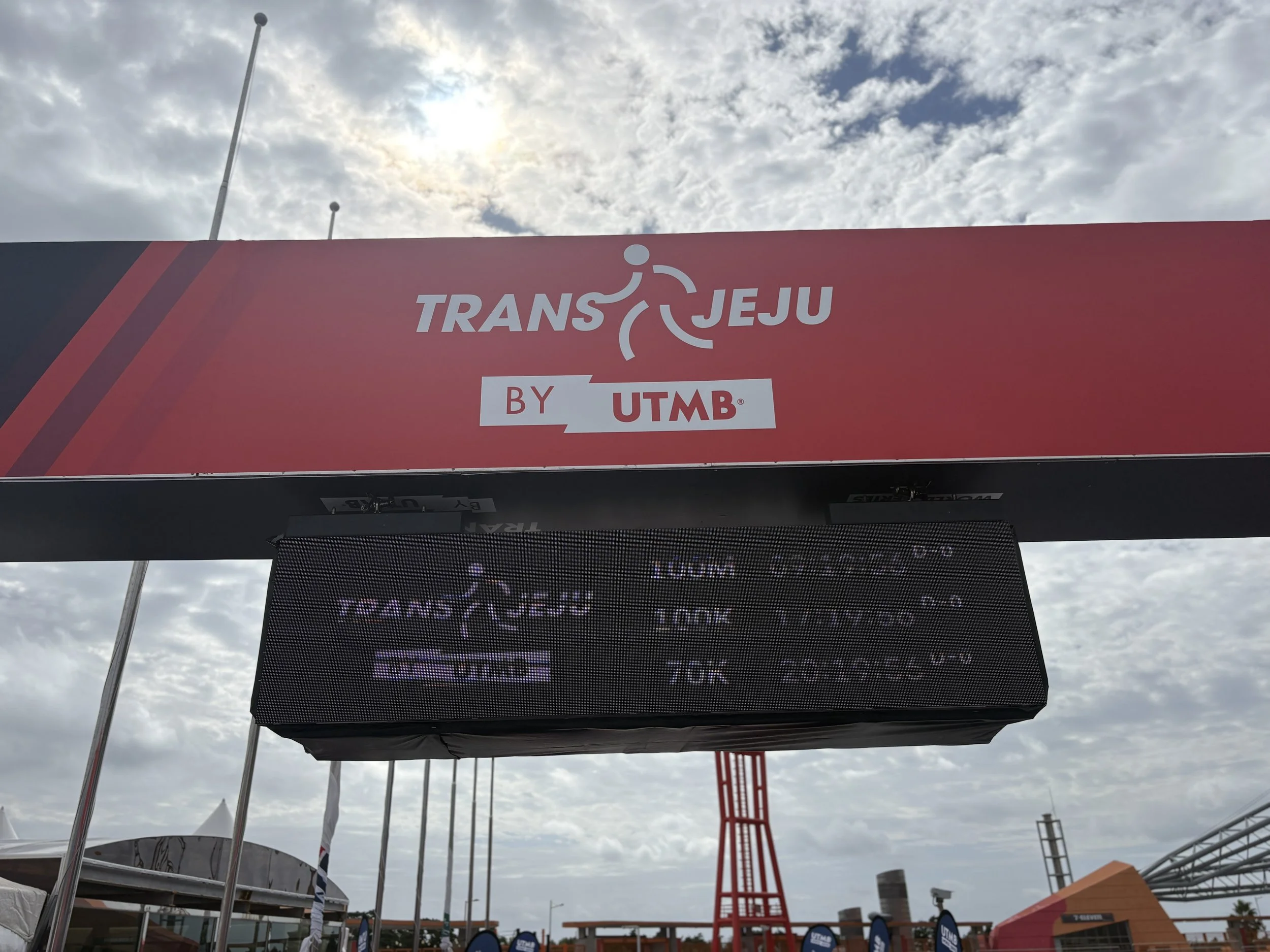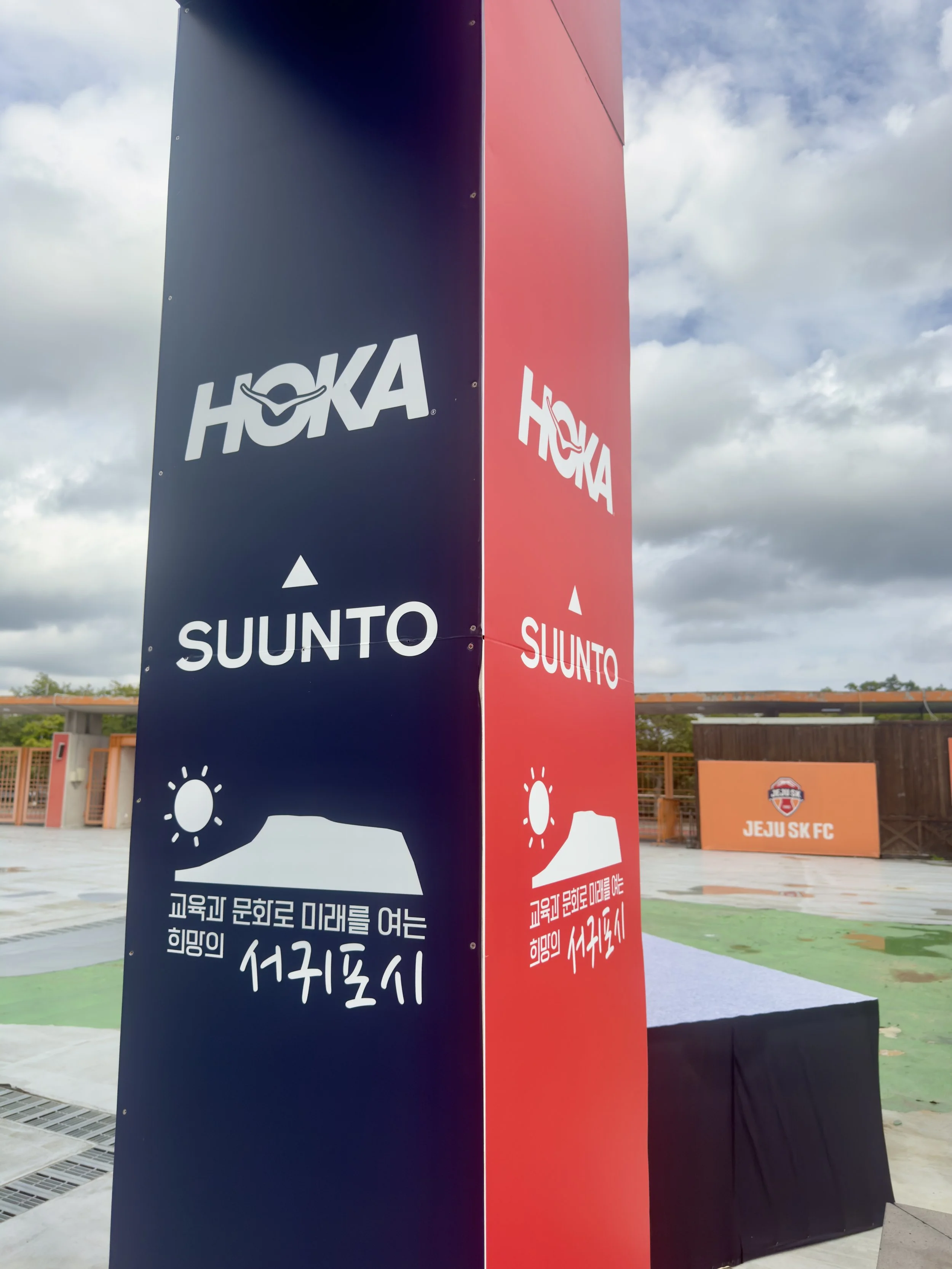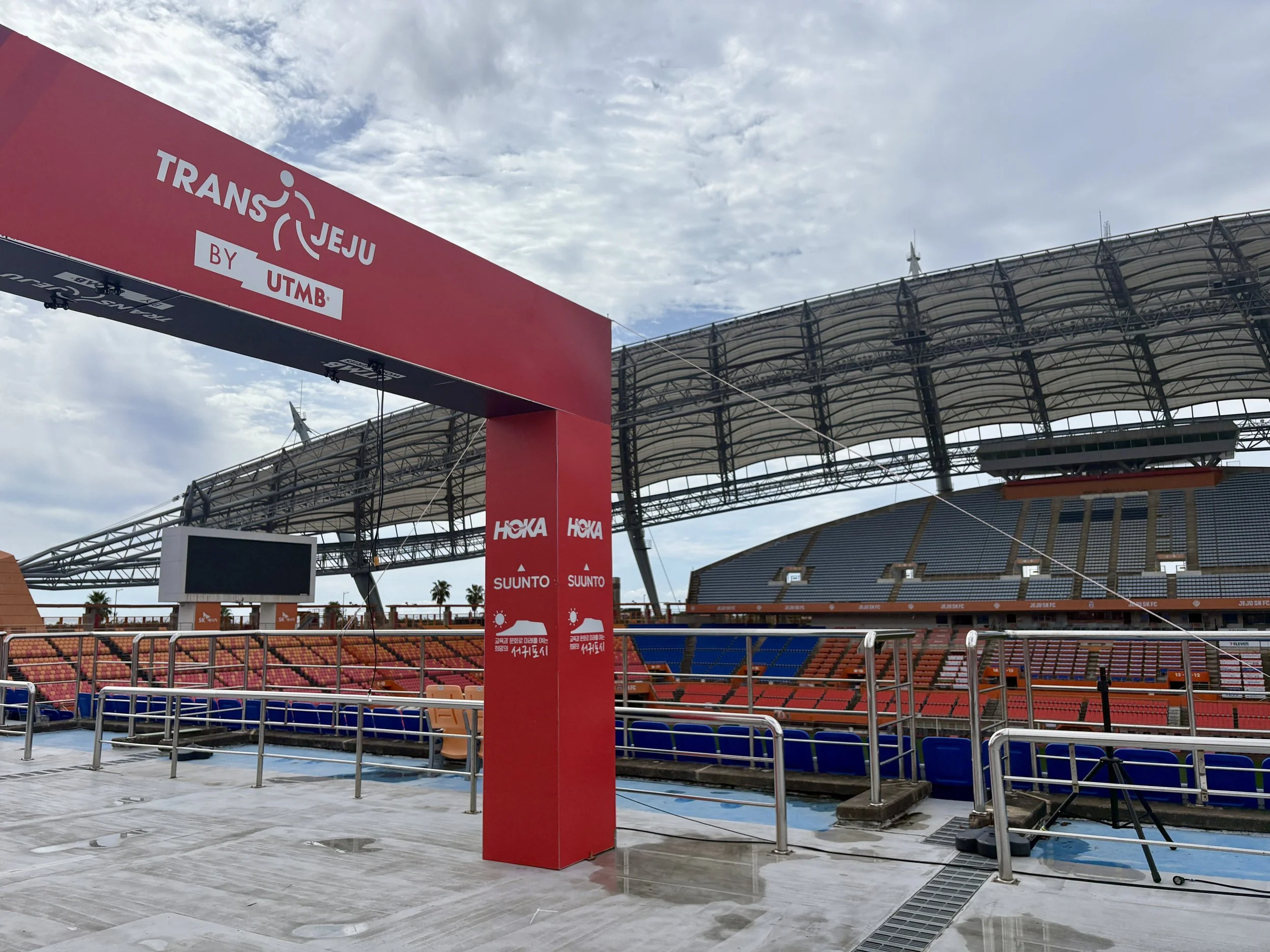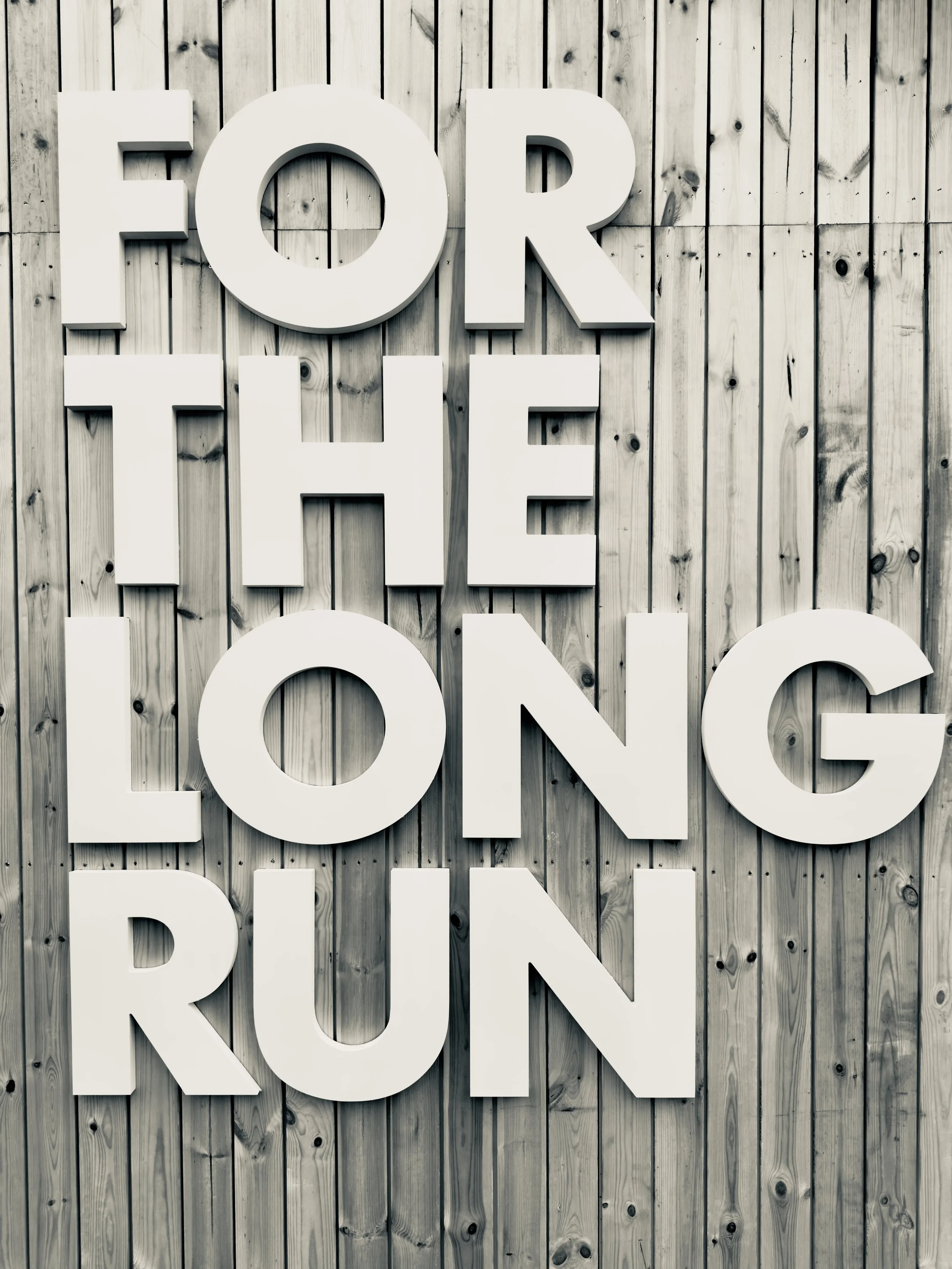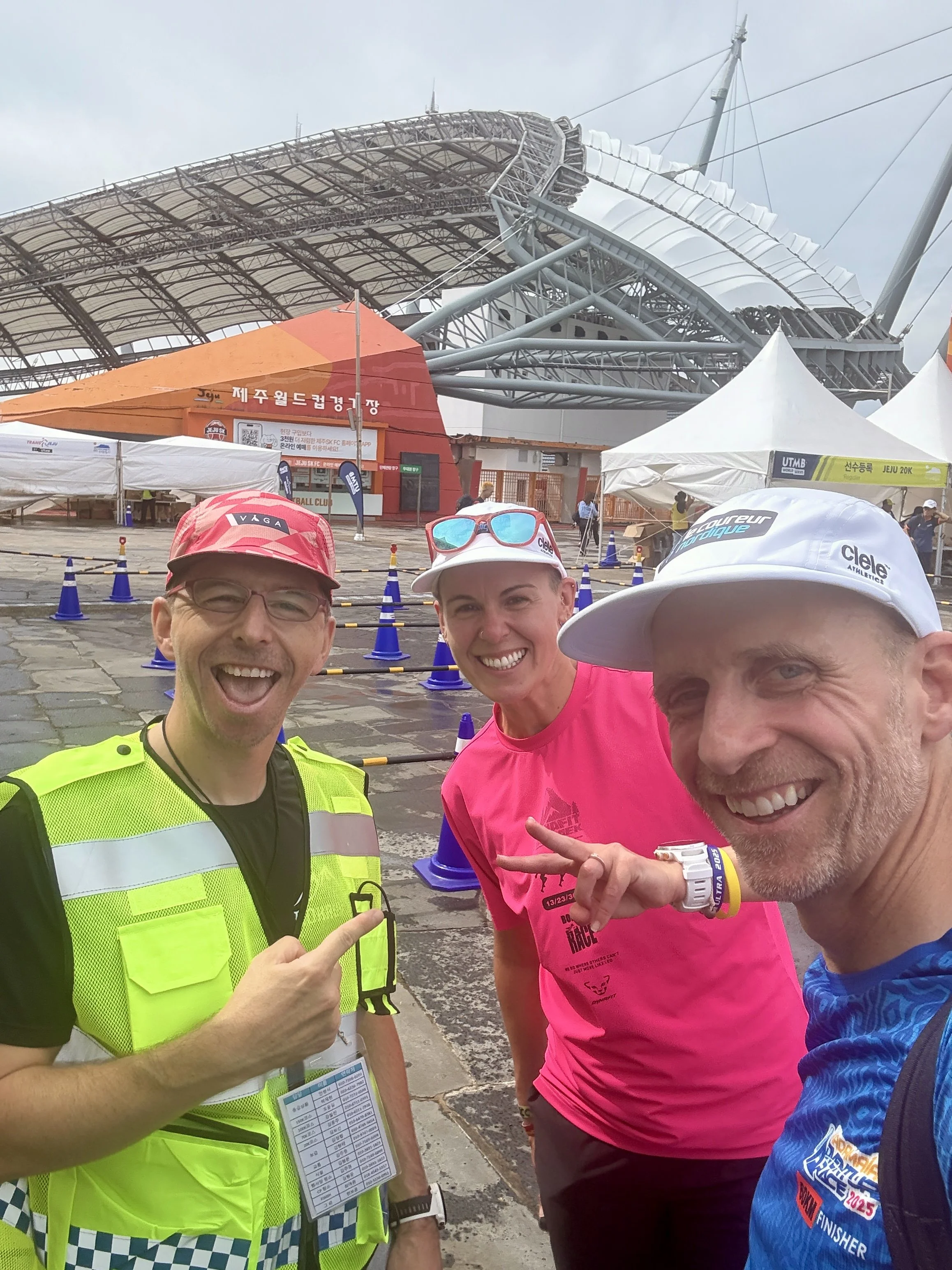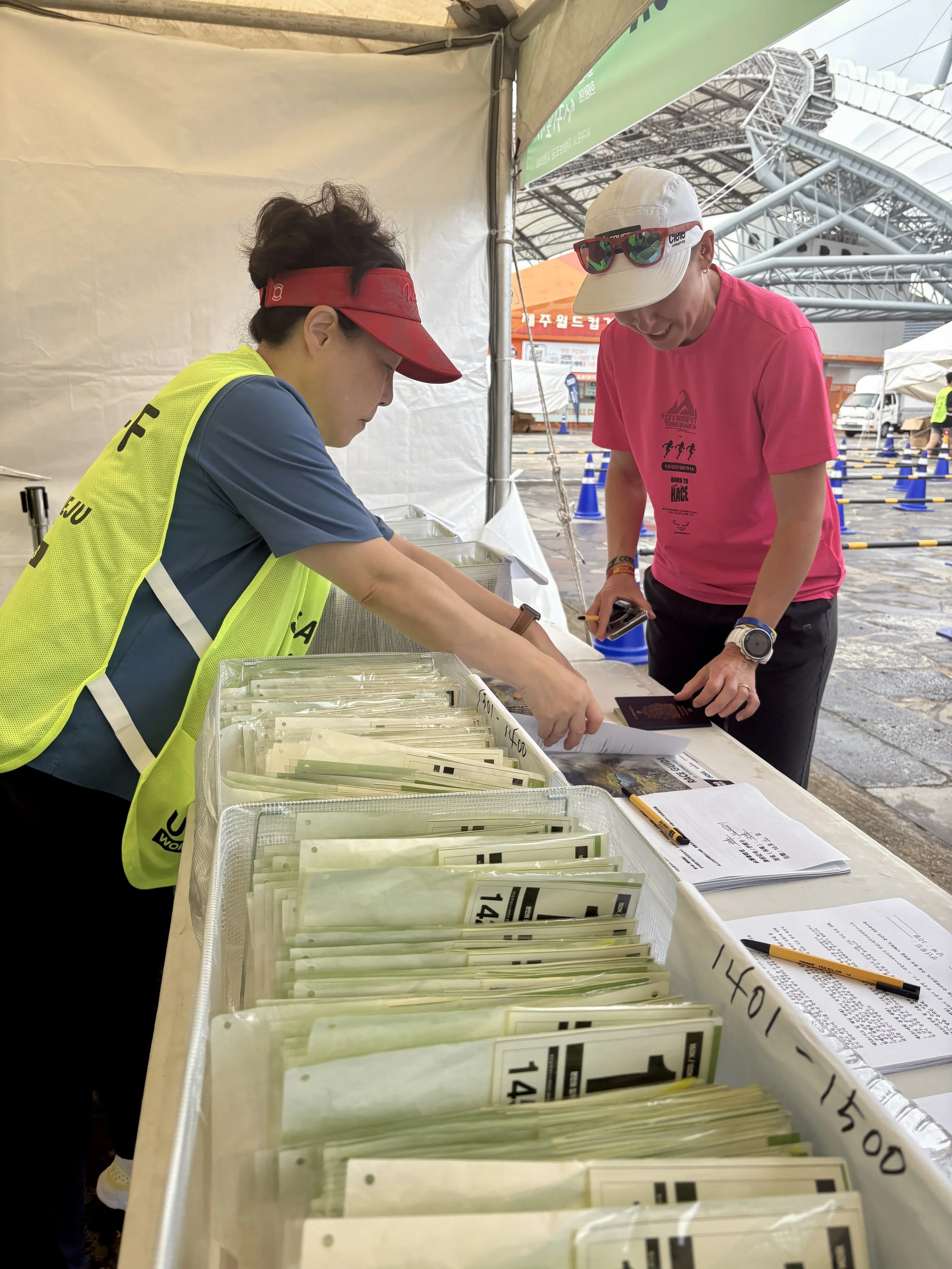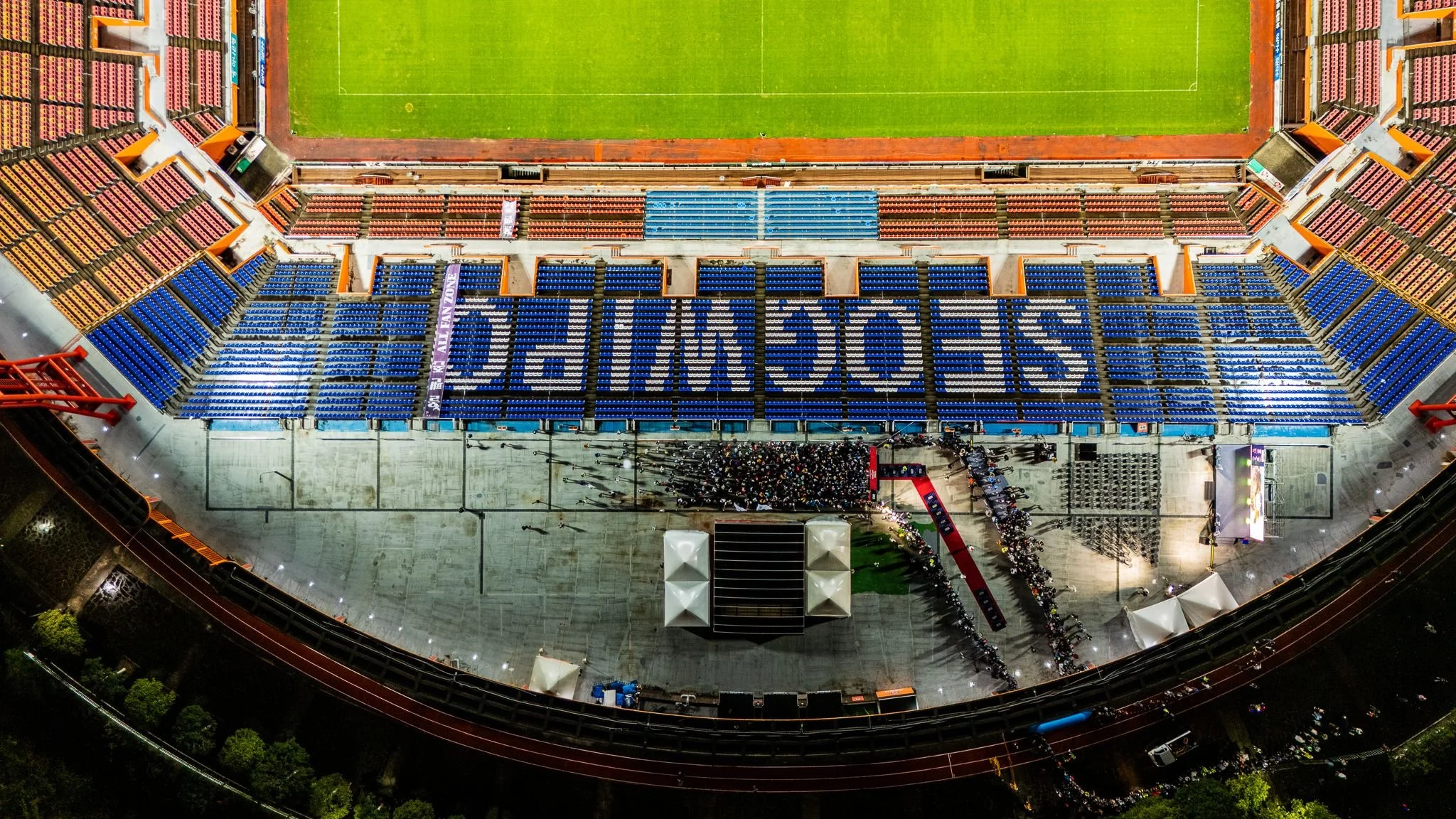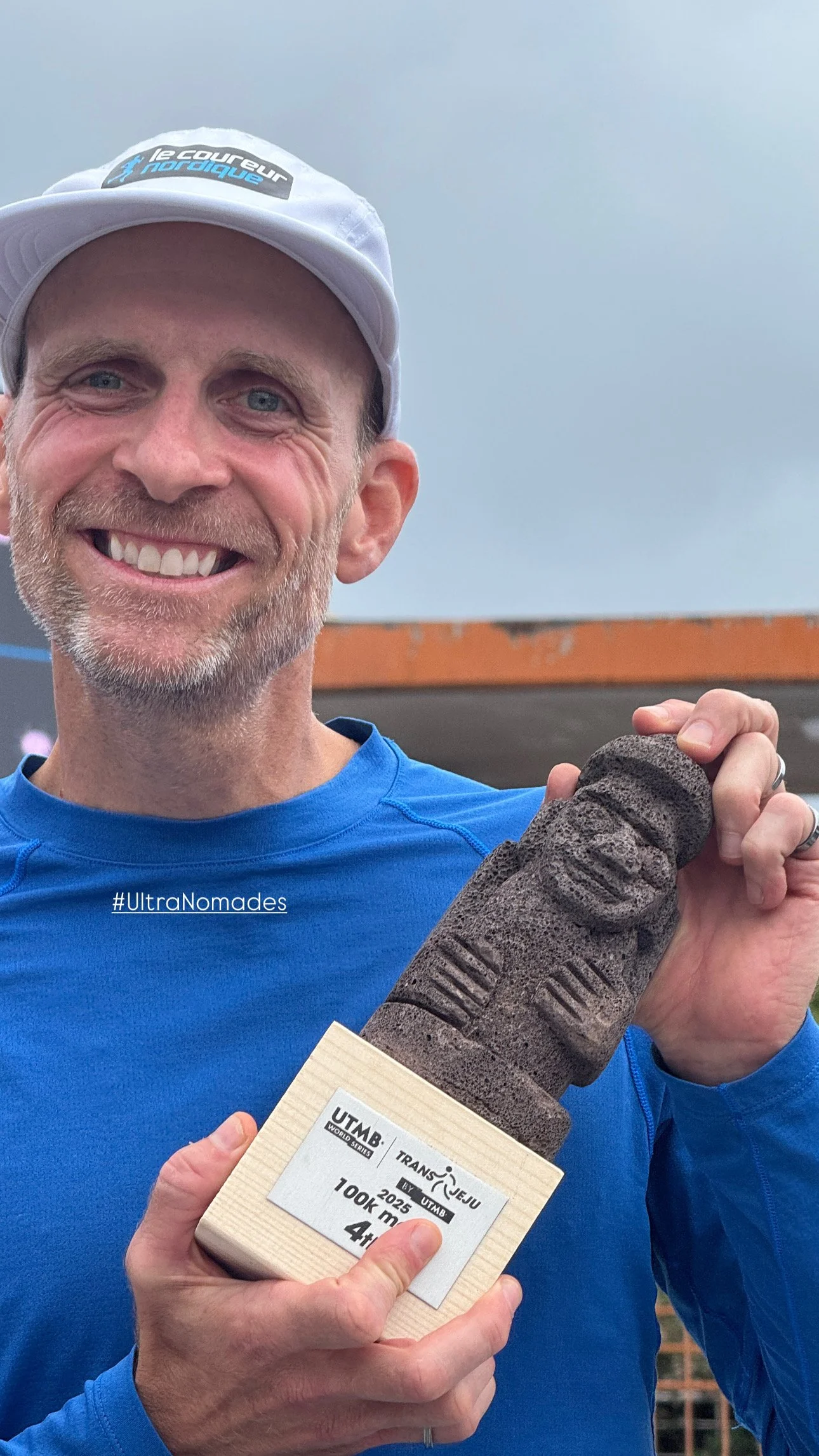TransJeju 100k by UTMB 🇰🇷
You can write tons of things after a race: your time, your placing, the kilometers covered or the elevation gained, the strategy deployed, the goals conquered or lost along the way, what you executed brilliantly, what you should have done differently, the beauty of the trails, the precision of the marking, the generosity of the aid stations...
All of this offers our loved ones, our friends, those who will never take the start line, a window into our world. A way to imagine what this race really means, to try to grasp the state it plunges us into, kilometer after kilometer.
Yet even we, runners ourselves, know this better than anyone: no account truly captures the essence. The emotions that pass through, the transitions that overwhelm, the flow that settles then evaporates, the peaks of euphoria like the valleys of despair. Those physical sensations that become almost cosmic. The moments of grace where your body becomes pure fluidity, and those fragments of anger when it refuses to move forward.
TransJeju 100k was exactly that.
A story like all the others — and yet profoundly unique. With an intensity of emotions that no language can truly translate. A story that remains forever sealed between those who tell it and the trail that carried them. Between each heartbeat leading to the finish line. That smile at the end, carrying ineffable pride. A story that only our feet truly understand.
Then, they'll do it again.
For those who would like to decipher the codes, we must always return to these fragments we share after the line. Because it's them, these scattered pieces, that allow us to understand why, again and always, we do it again.
The Facts, Then
The Island That Fire Built
Jeju Island rises from the sea like a sentinel of fire and stone. A UNESCO World Heritage site, this volcanic wonder sits 90 minutes by plane from Seoul, where black basalt cliffs plunge into turquoise waters and where ancient forests whisper stories older than memory.
Mount Hallasan stands at 1,950 meters, watching over trails that host one of Asia's most demanding UTMB World Series races.
Our preparation: We arrived four weeks before race day. Not as tourists, but as students of the mountain. These weeks of reconnaissance taught us what no briefing could ever convey.
The Race in Numbers
Distance: 107 km
Elevation Gain: 4,252m
Start: Jeju World Cup Stadium
Time Limit: 29 hours
ITRA Points: 5
Type: UTMB World Series Race
The course: Circumnavigation of Jeju's interior, threading through UNESCO-protected forests and climbing twice to Hallasan's crater rim.
The profile looks almost innocent — rolling terrain with two major climbs. But this simplicity masks the reality: endless staircases carved from ancient basalt, volcanic rock gardens where stones shift unpredictably beneath your feet,and wooden decks that transform into skating rinks under rain.
Dancing with the Trails
5:00 AM: One Thousand Headlamps
Over 1,000 runners gathered in the pre-dawn darkness. The crowd was overwhelmingly Korean with only a handful of international adventurers.
Why Starting Position Matters
The first kilometers narrow through single-track trails crossing multiple streams. Starting too far back means bottlenecks, wasted energy, faster runners stacking up behind you.
Strategic positioning isn't ego. It's race intelligence.
Our choice: Elisabeth and Francis both positioned themselves strategically near the front, a lesson learned during our reconnaissance weeks.
When the gun fired, one thousand headlamps flowed toward the forest. Each runner began their own conversation with Jeju's volcanic landscape.
The first kilometers carried us in collective euphoria — that sensation of invincibility that only race starts provide, when the body responds with grace and the spirit floats above the trail.
The First Kilometers in the Forest
Kilometer 4: Pavement disappeared completely. Forest trails began their steady climb toward Mount Hallasan.
Elisabeth settled into her rhythm, her two weeks of visualization practice making these early kilometers feel like rehearsing a song she knew by heart. Francis pushed with controlled intensity, his nutrition strategy locked in — one gel every 20 minutes.
The marking: Impeccable from the first step. Volunteers at key junctions. Luminous markers catching headlamp beams. Painted arrows on trail surfaces. We never questioned the route.
CP1 (7km): Most runners passed quickly, maintaining momentum.
When Poles Disappear
At daybreak, the real climbing began. Four kilometers of ascent where trekking poles would normally help.
Except poles are banned.
Our reconnaissance runs had taught us why. The endless staircases and constant need to navigate around slower hikers make poles more obstacle than aid. They catch on railings, tangle with other runners, disrupt flow.
You adapt. You find rhythm without the extra support.
The Volcanic Rock Salad
And what an adventure, this salad of volcanic rocks!
You can scout the terrain, study it, visualize it... but after 75 kilometers, these same unstable rocks reveal their true nature.
Understanding the Challenge
Each stone that rolls under your foot becomes a balance game. A technical dance demanding your complete attention.
The technicality you master at kilometer 20 transforms into fascinating challenge at kilometer 80.
The ascent toward the crater: The ascent toward Hallasan's crater rim became relentless. Then came what runners call "the endless staircase."
Wooden stairs gave way to volcanic rock stairs. These transformed into stone steps worn mirror-smooth by millions of tourist feet. Tourists who weren't particularly inclined to move aside for sweaty runners.
How the Rocks Behave
The rocks themselves didn't just sit immobile. They rolled. They shifted. They constantly betrayed our footing.
Each descent demanded absolute concentration:
Reading terrain ahead
Choosing stable stones
Maintaining balance on shifting surfaces
Navigating around stopped hikers
Elisabeth moved cautiously, remembering her reconnaissance runs on these exact sections. Francis descended with confidence, choosing his lines carefully but moving with purpose.
The Five-Minute Decision
After the technical gauntlet of the descent, ten kilometers of road followed. Nothing truly prepares trail runners for the monotony of extended pavement after the forest's embrace.
CP4 arrived at 42 kilometers as the first crew-accessible point. Here lay the crucial decision that would resonate through every remaining kilometer.
The Choice
Elisabeth's socks were soaked, her shoes drenched after hours of rain and stream crossings. Take five minutes to change into dry gear? Or push forward maintaining her current pace?
She chose speed. Francis made the same calculation.
It was tactical reasoning made with racing logic. But this choice would extract its price through the final 30 kilometers when blisters would bloom and feet would macerate.
"Taking time to change your socks and shoes is also using tactics!"
— Elisabeth's ultimate lesson learned
The price paid: Enormous blisters. Stiff legs. Macerated feet. Five minutes of care would have saved hours of suffering.
The 20 Kilometers That Test Everything
What awaited after CP4 became one of TransJeju's most demanding challenges: nearly 20 kilometers without aid.Twenty kilometers that included the second and final climb toward Hallasan.
Return to the Volcano
Ten kilometers of ascent stretched before us. Management became critical: Every sip had to be calculated. Every gel consumed came from our own reserves. The weight in our packs represented our survival for the coming hours.
Elisabeth carried her 37 (!!!) gels, this weight becoming oppressive on this second ascent. Francis maintained his rhythm — gel every 20 minutes — but even his proven discipline was tested by this unsupported section.
The Magnificent Wild Ascent
As we climbed higher, the landscape transformed into something magnificent and wild. The trail wound toward the summit and the crater lake. On lucky days, the view is absolutely breathtaking.
We crossed hundreds of hikers making their way up and down. The atmosphere at the top felt unnatural somehow — shyness? Dubitativeness? We couldn't quite place it. So we cheered for ourselves, we screamed loudly for our own accomplishment, and switched into warrior mode to descend through the crowds of hikers with their poles.
The Technical Descent — Again
The second descent from Hallasan proved as technical as the first, but now our legs had 50 kilometers in them. Each stone rolling underfoot demanded more concentration. Each balance adjustment drew from reserves that were dwindling.
CP5 (60km): When Damage Announced Itself
When CP5 finally materialized after nearly 20 kilometers, it was almost like a hallucination made real. An aid station. Water. The possibility to refuel.
But there was no crew access here. The stations presented traditional foods — all unlabeled. Rice balls, local fruits, wrapped treats. Mysterious contents.
What this section revealed: These 20 kilometers between CP4 and CP5 weren't just about technical terrain. They tested resource management, strategic planning, the ability to function without external support over distances that pushed standard hydration systems to their limits.
Physical damage: The vest straps had dug deep. And the feet — those feet wet for hours — began their serious rebellion inside shoes that had become swamps.
Mental shift: Elisabeth reflected on her ambitious time goal. Had she dreamed too big? Her visualization practice had made the first 75 kilometers feel like repeating a song she knew by heart. But the script had changed.
The Final Stretch: When Stones Teach Humility
CP7 arrived at 83 kilometers — the second crew-accessible point. Over 20 kilometers remained.
Legs felt heavy in a way different from normal fatigue. That deep muscular exhaustion that comes from hours of impact and technical navigation.
But stopping never entered the equation. Only forward motion, however slow it became.
Through Forests and Streams
The slippery stones under rain. The accumulation of fatigue. These moments where each step became a passionate conversation with yourself.
We learned. Adjusted. Persevered with stubborn smiles.
The trail wound through magnificent Korean Christmas tree plantations — conifer forests that felt almost otherworldly. Then came the national cemetery, spooky in the darkness, our headlamps cutting through the night.
Multiple stream crossings awaited, some quite swollen from the day's rain, adding another layer of technical challenge when legs were already exhausted.
Francis Perseveres
Francis pushed relentlessly, but he too felt his legs losing the rhythm of the early kilometers. The descents had taken their toll, extracting cartridges from his reserves. But he persevered, maintaining his discipline even as the terrain demanded more than he felt he had left to give.
Elisabeth's Battle
Elisabeth kept moving, one step at a time. Her technical descents remained the challenge — with rain and rolling slippery stones, she couldn't find flowing descent rhythm. Sections she should have run, she walked.
But her mental game remained strong.
"I kept positive morale until the end even when nothing felt good anymore."
The thought of stopping never materialized. Only the determination to finish what she'd started.
CP8 and the Final Push
CP8 materialized at 91 kilometers. She recognized the terrain from her reconnaissance runs — that familiarity provided crucial psychological fuel.
Just 16 more kilometers.
The Final Rush into Town
Finally, the trail brought us back into town. The final rush toward civilization after so many hours in the wild. But the technical challenges weren't over yet.
Intersections required crossing through storm drain culverts — unexpected technical sections where vigilance and headlamp visibility became critical in the darkness. Your focus had to stay sharp even when exhaustion screamed for you to just get to the finish.
These last kilometers tested everything one final time. Not the grand challenge of the mountain, but the small, precise challenges that can trip you up when you're closest to the end.
Two Finishes, One Truth
Francis:
Time: 13h25:44
5th overall, 4th male
2nd age category
Elisabeth:
Time: 18h46:26
158th overall, 17th female
3rd age category
The Shared Truth
We crossed that line with radiant smiles — separated by kilometers and hours, but united by the same intoxicating truth:
This is trail running. An infinite conversation with yourself, where each answer leads to a new question, where each obstacle reveals a new strength.
Lessons Carved in Volcanic Stone
What Shines ✨
The terrain: Volcanic running unlike anywhere else — technical, demanding, visually stunning.
The marking: Impeccable from start to finish. We never questioned the route.
Reconnaissance: Four weeks of scouting transformed our experience, though racing under pressure revealed entirely new dimensions of difficulty.
Thank you to the organizers: We extend our sincere gratitude to the organization and all the dedicated volunteers who made this magnificent, demanding course possible.
What Could Improve
For future editions: The 20km unsupported section between CP4-CP5 with major Hallasan ascent challenges standard hydration systems. Earlier GPX distribution (currently arriving less than a week before race day) and adjusted briefing timing (8 PM briefing compromises sleep before 5 AM start) would enhance preparation.
Simple additions would elevate the experience: Labeled food at aid stations, feminine hygiene products, and equal recognition of elite female athletes alongside their male counterparts.
Universal Truths & Tactical Learnings
On pacing and strategy: "Did I start too fast? I felt so good at the start... I still don't know how to balance ambitious goals with intelligent execution." — Elisabeth
On tactical decisions: Not taking five minutes for dry socks and shoes proved the single biggest tactical error. Five minutes of care saves hours of suffering.
On mental preparation: Visualization practice paid dividends through 75 kilometers: "I had the impression of redoing a course I already knew by heart, at least until the 75th km."
On cheering for yourself: When you reach the summit and the atmosphere feels muted, cheer for yourself. Scream loudly for your own accomplishment. You've earned the celebration.
Final takeaways:
Starting position matters to avoid bottlenecks
Resource management over long unsupported sections is as important as physical strength
Technical vigilance matters until the very last step
After 75 kilometers, even familiar trails reveal new truths
Mental strength carries you when physical strength fails
UltraNomades – What's Next?
Where volcanic trails teach lessons no training plan can provide.
Our next rendez-vous with the ultra-distance is already set: Chiang Mai Thailand 100k by UTMB, December 6th.
And you, will you do it again? What's your next big challenge? Share it with us on Instagram or follow our adventure to Chiang Mai.
UltraNomades – We ®️U.N.

